Sunken patios transform ordinary backyards into cozy, intimate retreats by lowering a section of the outdoor space to create a distinct gathering area. Incorporating features like fire pits, integrated seating, and water elements enhances ambiance and functionality, while materials such as natural stone, concrete, and wood help define style. Strategic lighting and lush greenery soften hardscape edges and extend usability into evening hours. From minimalist contemporary finishes to rustic wood accents, there’s a sunken patio concept for every taste and budget. The following 20 ideas explore diverse design approaches to inspire your own unique sunken patio sanctuary.
1. Fire Pit Focal Point

Centering a fire pit within a sunken patio instantly creates a warm gathering spot that encourages conversation and relaxation. Whether you choose a circular gas-fueled bowl or a rectangular wood-burning hearth, positioning the fire feature at the patio’s core draws guests inward and provides heat on cool evenings. Surrounding the pit with a ring of built-in seating, such as low-profile stone benches or curved wooden ledges, maximizes both comfort and space efficiency. To ensure safety and longevity, select fire-resistant materials like bluestone or concrete pavers and consider integrating hidden gas lines beneath the paving for a clean, modern look.
2. Multi-Level Terracing
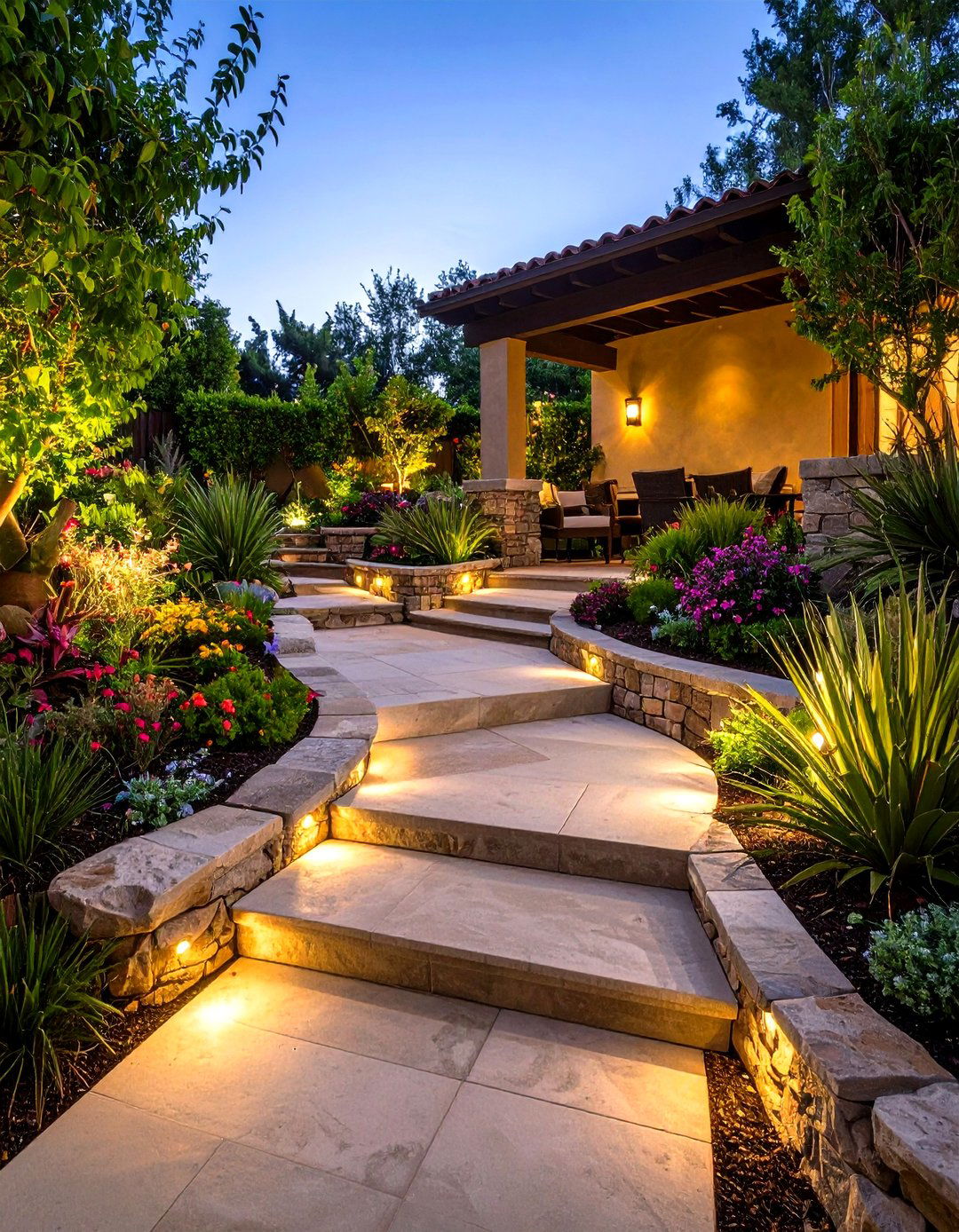
Incorporate terraced steps leading down to your sunken patio to create a dynamic transition from the main yard. Each tier can serve a distinct function—such as a planting bed on the top level, walkway on the middle, and seating at the bottom—adding visual interest and practical zones. Retaining walls constructed from natural stone or modular concrete blocks help manage soil pressure while providing seating ledges or planters. Varying step widths and riser heights introduces rhythm into the design, guiding guests seamlessly into the lowered living space. Accent lighting along the steps enhances safety and highlights textural contrasts after dark.
3. Natural Stone Pavers
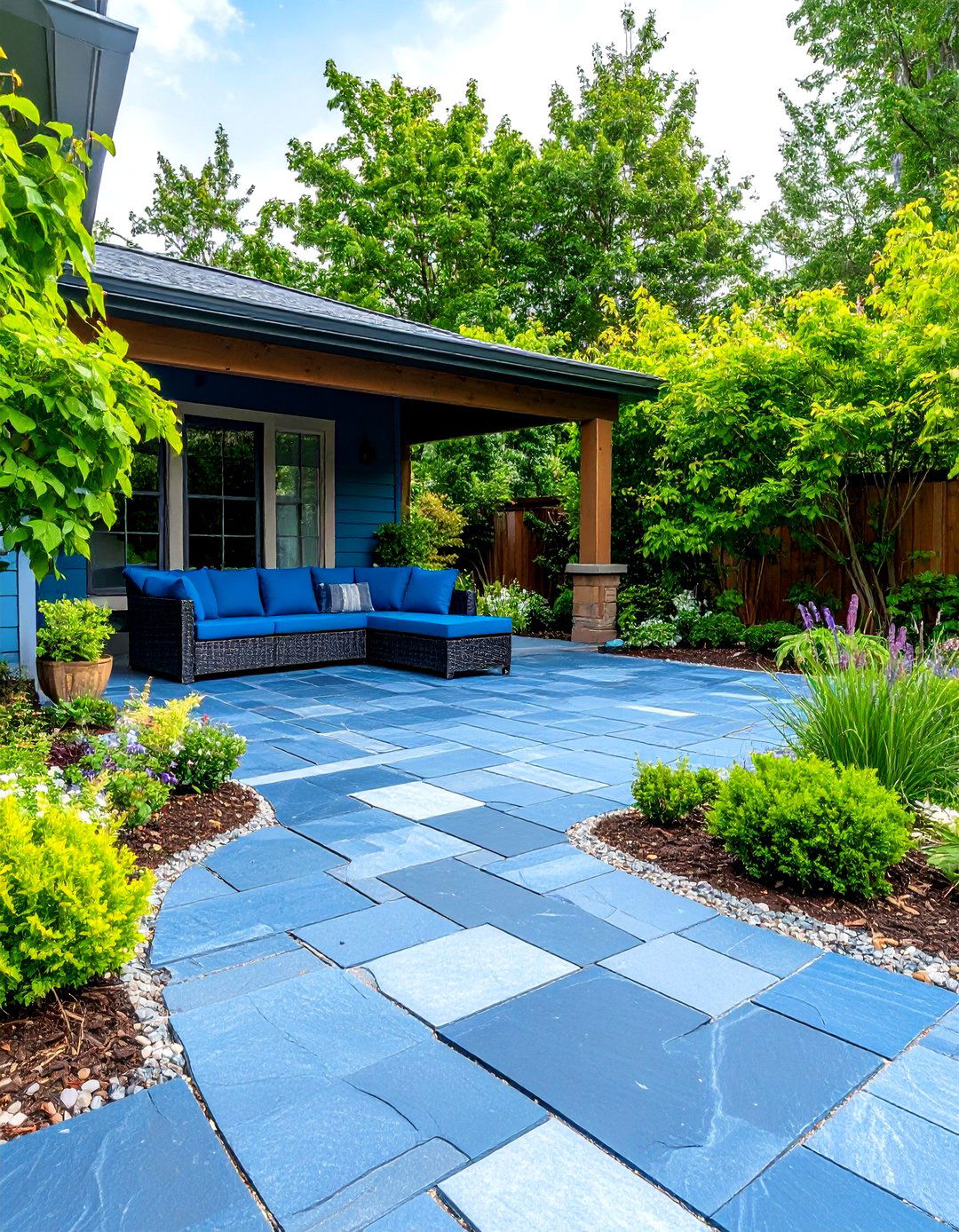
Opting for irregular flagstone or quarried bluestone pavers in your sunken patio infuses an organic, timeless charm. Irregular joints filled with sand or low-growing groundcovers soften hard edges and allow for natural drainage. Choose stones in complementary hues—such as slate gray, sandstone tan, or earthy brown—to harmonize with surrounding landscaping. Installing the pavers on a compacted gravel base ensures stability, while underlayment fabric prevents weed growth. The inherent color variations and textures of natural stone create an inviting, rustic atmosphere that feels grounded in the landscape.
4. Integrated Bench Seating
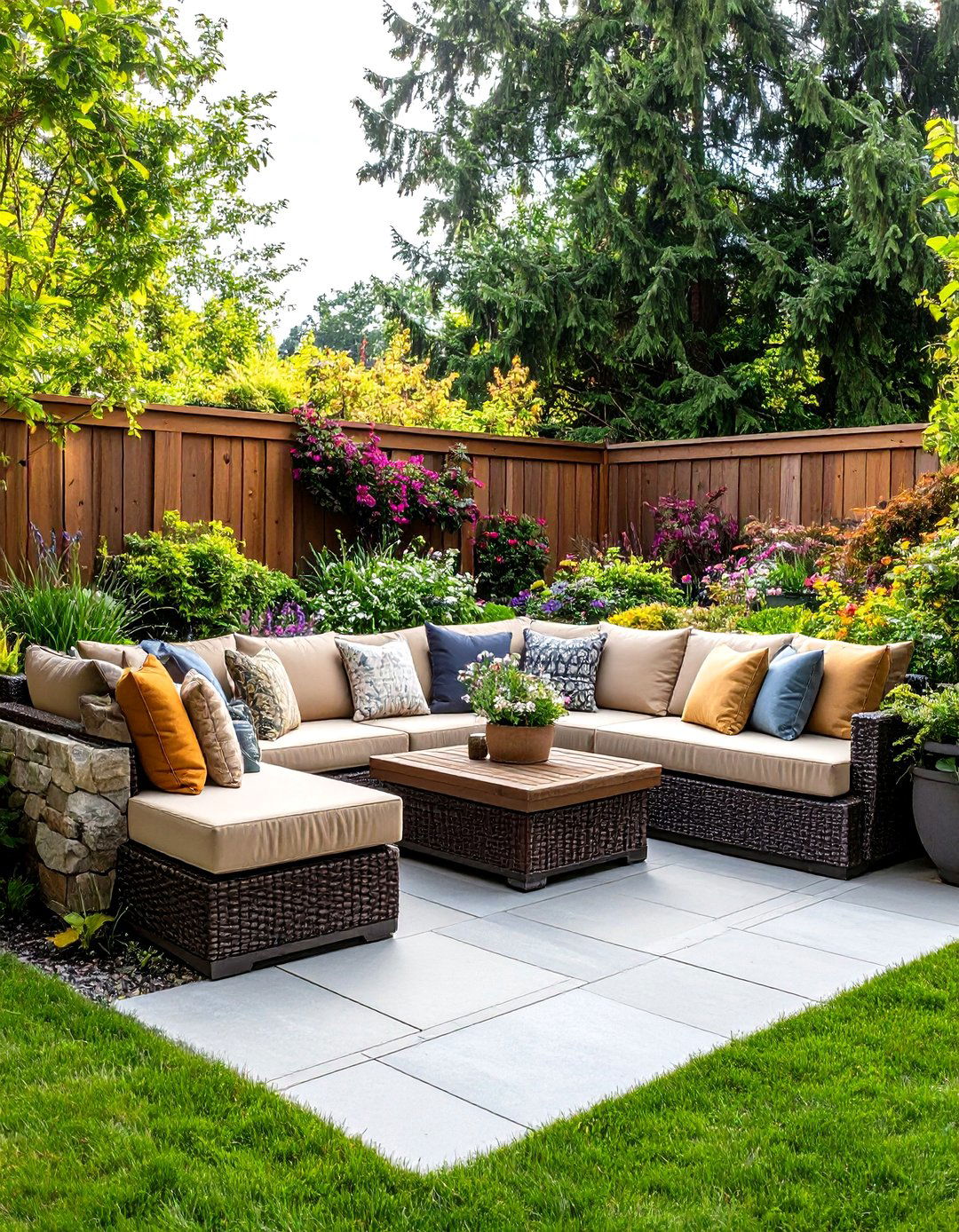
Built-in seating along the perimeter of a sunken patio maximizes square footage and eliminates the need for moveable furniture. Construct benches from the same material as your retaining walls—such as concrete blocks, poured concrete, or stone—to create a cohesive look. Incorporate cushioned seat pads and throw pillows for added comfort and color. To enhance durability, use weather-resistant upholstery fabrics rated for outdoor use. Consider designing bench backs that double as planters or trellis supports, integrating greenery directly into the seating structure.
5. Water Feature Accents
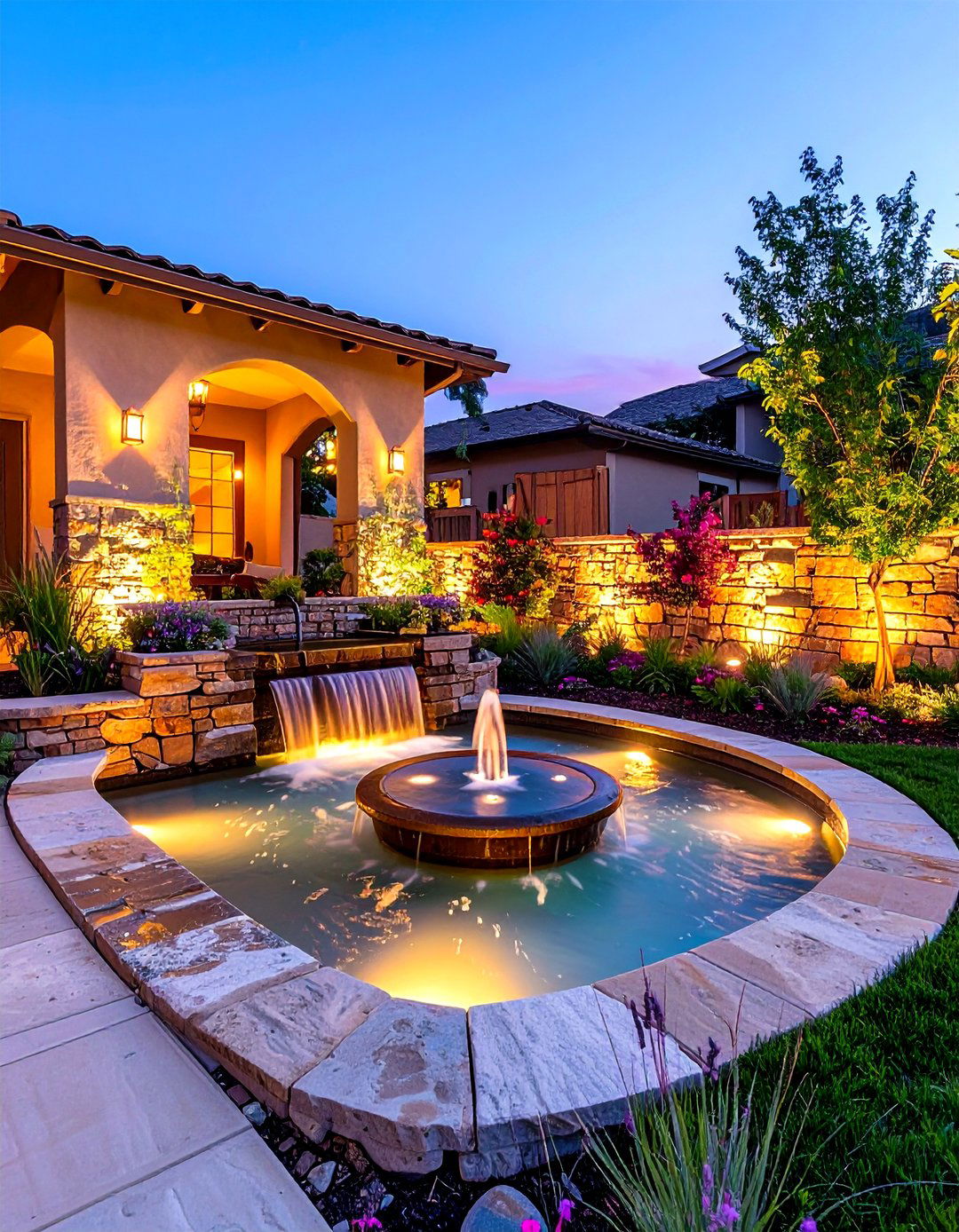
Introducing a water feature—like a bubbling fountain, wall-mounted waterfall, or reflecting pool—adds tranquility and ambient sound to your sunken patio. A wall fountain mounted on the retaining wall provides vertical interest, while a small pond at floor level can house aquatic plants or koi. Position the feature so that water flows toward the lowest point, enabling easy recirculation and filtration. Use LED spotlights to illuminate water movement after dark, enhancing the sensory appeal. Ensure proper waterproofing and access panels for pump maintenance to keep the system running smoothly.
6. Outdoor Sunken Living Room
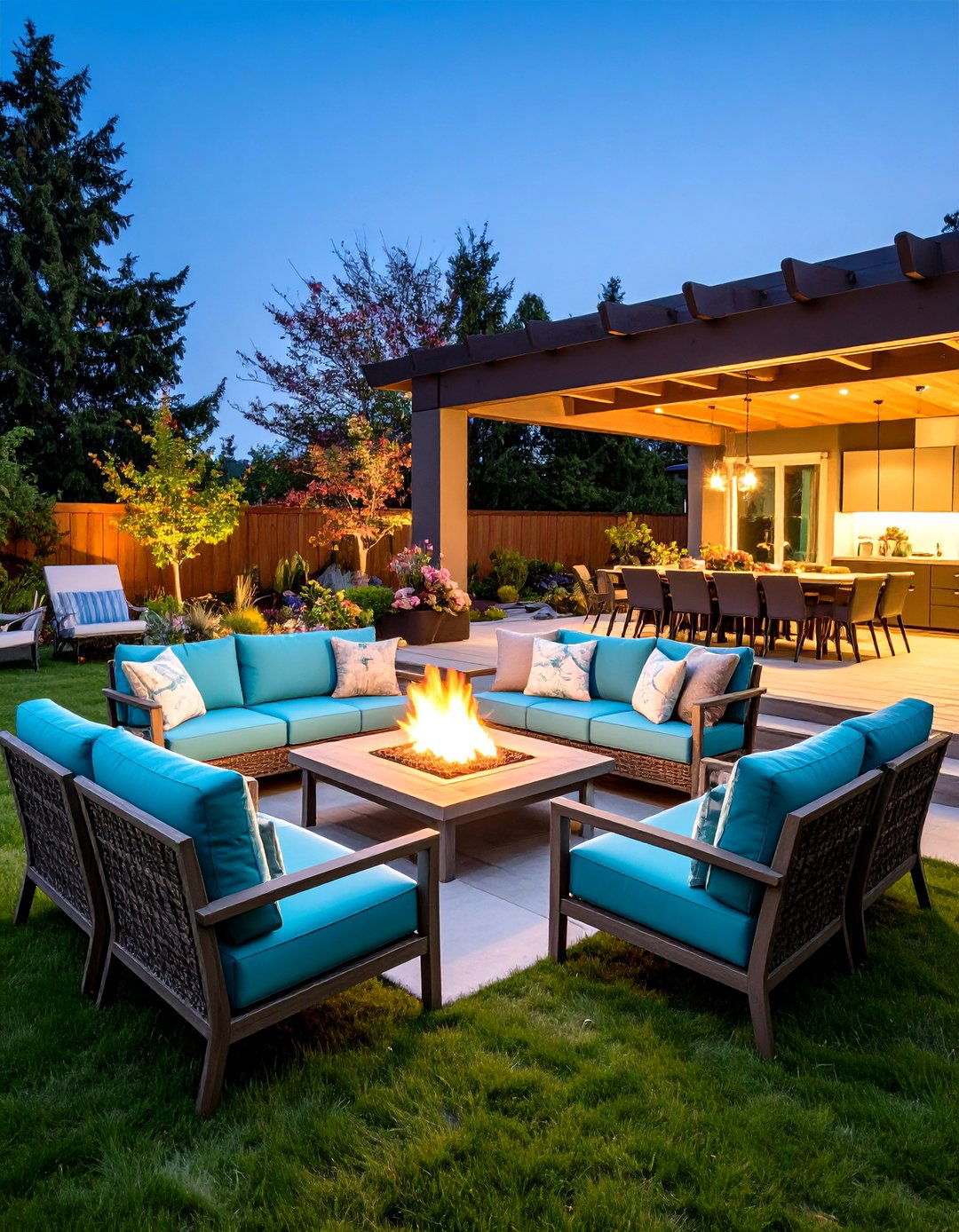
Transform your patio into an outdoor living room by incorporating weather-resistant sofas, lounge chairs, and coffee tables within the sunken area. Arrange furniture in a U-shape around a central focal point—such as a fire pit or coffee table—to foster intimacy and conversation. Using modular outdoor sectionals allows for flexibility when hosting larger gatherings. Layer in area rugs made from recycled polypropylene to define the seating zone and add texture. Incorporate side tables for drinks and snacks, and consider a nearby built-in bar or serving station for entertaining convenience.
7. Minimalist Concrete Finish
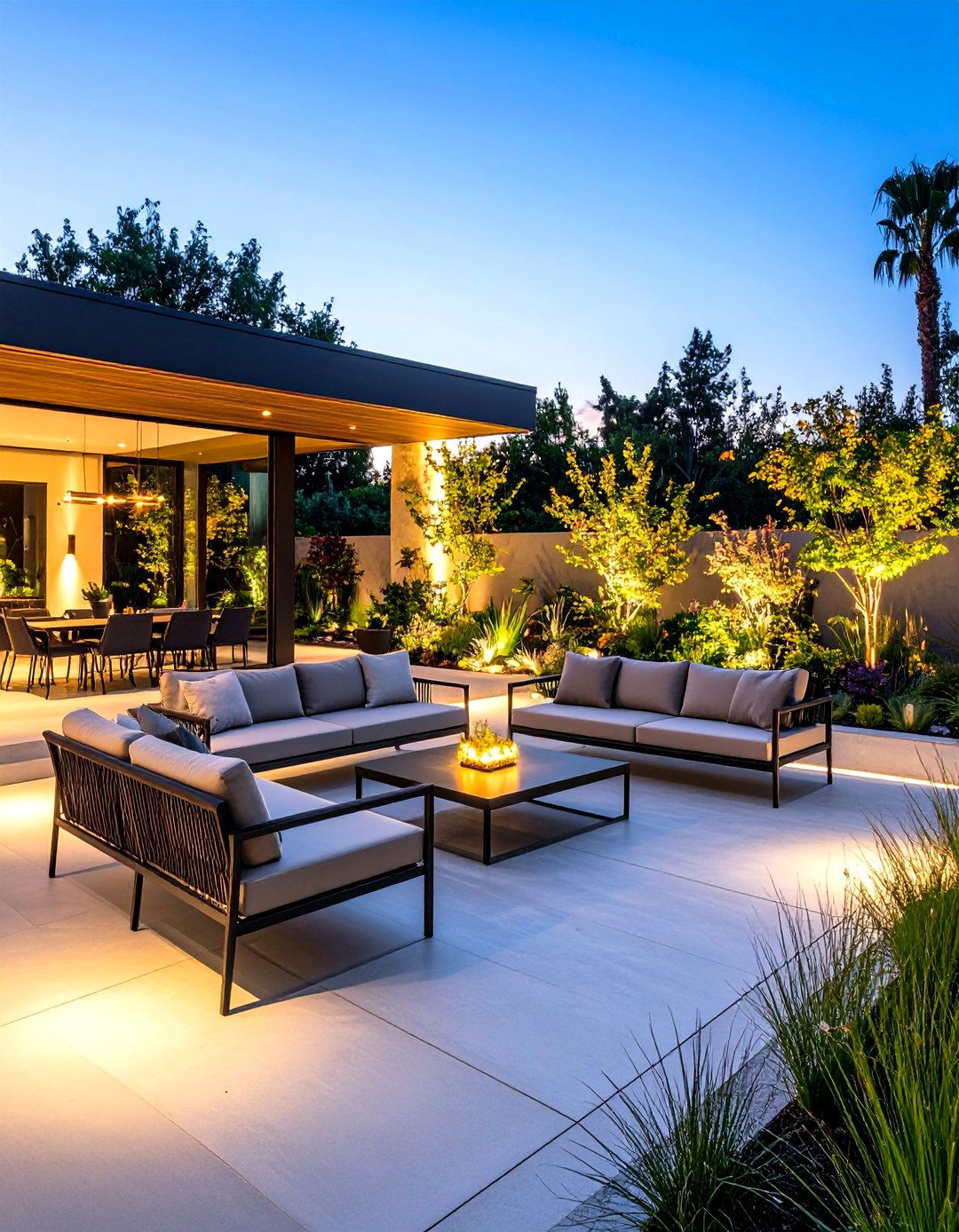
A smooth, polished concrete floor offers a sleek, minimalist aesthetic for a contemporary sunken patio. Honed or exposed-aggregate finishes showcase subtle textural variations, while integral color pigments can be added to complement your home’s exterior palette. Concrete’s thermal mass retains warmth during cool evenings, and radiant heating elements can be embedded beneath the surface for added comfort. To prevent cracking, reinforce with welded wire mesh or fiber additives, and ensure proper expansion joints. Pair the floor with simple steel-framed furniture and linear lighting for a modern, understated retreat.
8. Rustic Wood Detailing
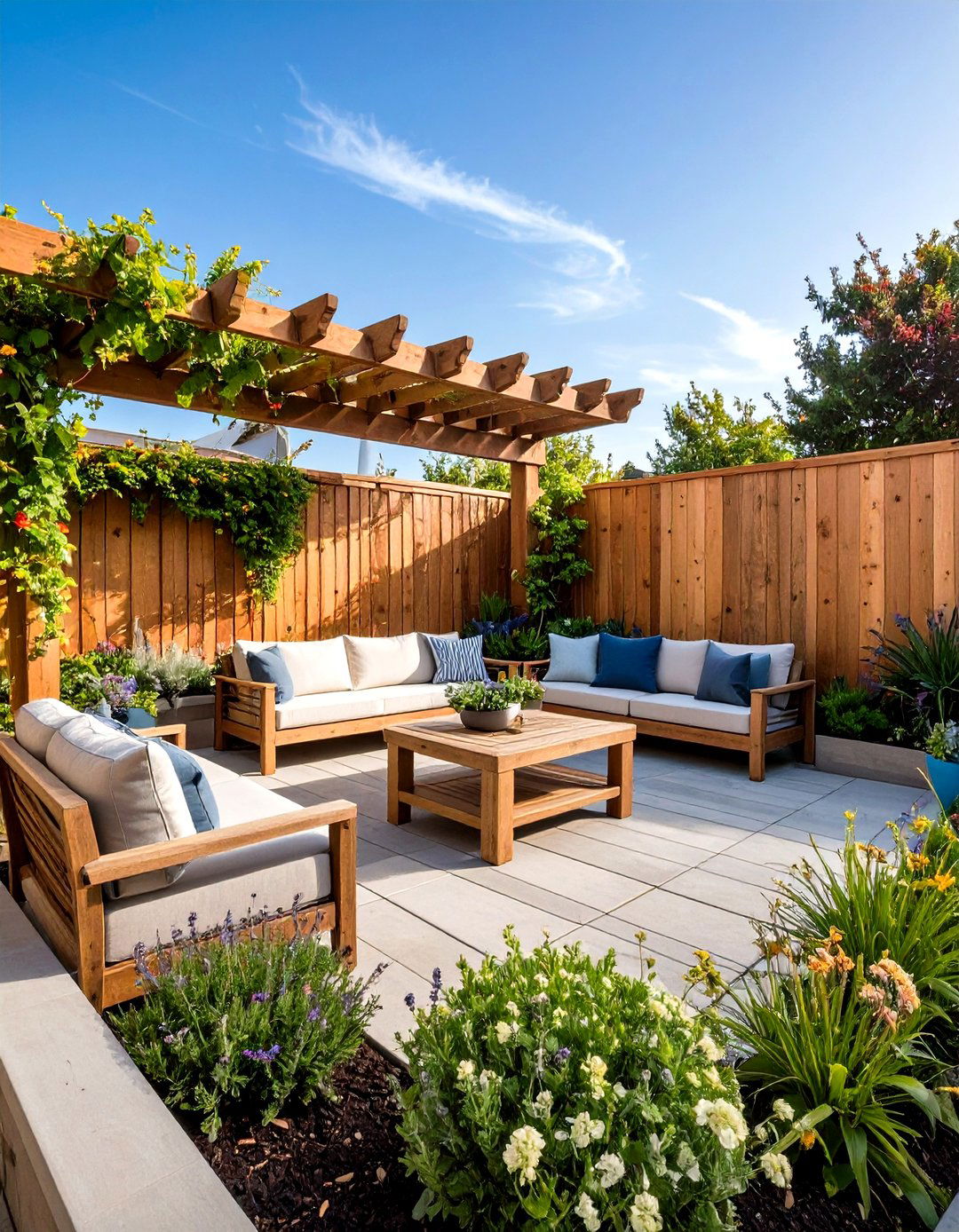
Incorporate reclaimed timber or rot-resistant wood like ipe or cedar for decking accents, pergola beams, or bench surfaces within the sunken patio. Wood introduces warmth and organic texture, balancing harder elements like stone or concrete. Create a wood slat privacy screen along one side of the patio to filter views and support climbing plants. To protect against moisture and UV damage, apply clear sealers or natural oil finishes annually. Wood detailing pairs beautifully with soft textiles and potted greenery, fostering a cozy, cottage-like ambiance.
9. Covered Pergola Integration
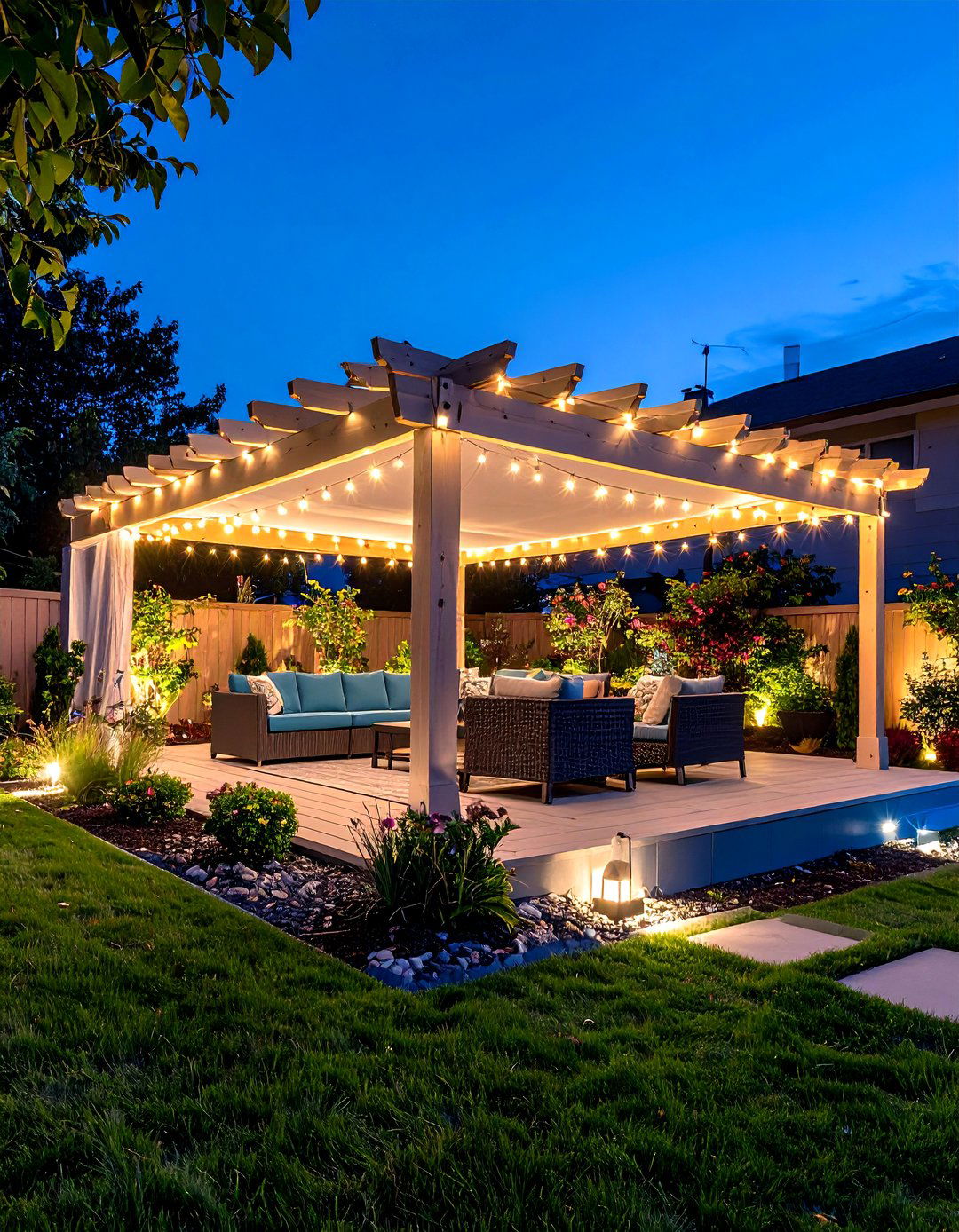
Adding a pergola above a sunken patio extends usability by providing shade during daytime and a structure for hanging lights or heaters at night. Use sturdy posts set into the retaining walls to support crossbeams and rafters. Install retractable fabric canopies between rafters for adjustable sun protection. String LED fairy lights or mount spotlights on the pergola beams to create a magical glow. For additional shelter, incorporate sliding clear acrylic panels on one or two sides to block wind and rain without sacrificing openness.
10. Lush Green Retaining Walls

Transform conventional retaining walls into vertical gardens by integrating planted pockets or modular living wall systems. Fill wall cavities with shade-tolerant foliage, ferns, or trailing vines to soften hard edges and introduce biodiversity. Ensure adequate waterproofing behind the planting pockets to protect structural elements. Utilize drip irrigation lines to deliver consistent moisture without overspray. Seasonal color can be added with flowering perennials or ornamental grasses, creating an ever-changing backdrop that enriches the sunken patio environment.
11. Modular Furniture Layout

Embrace flexibility with lightweight, modular outdoor furniture that can be reconfigured to accommodate different group sizes and activities. Cube ottomans, stackable stools, and foldable chairs allow you to switch from intimate seating to open floor space for games or dining. Store additional seating in adjacent niches beneath bench seating or behind removable panels in retaining walls. Opt for materials like powder-coated aluminum or resin wicker that balance durability with ease of movement. Cushions in complementary hues tie the modules together visually while resisting mildew.
12. Accent Lighting Design
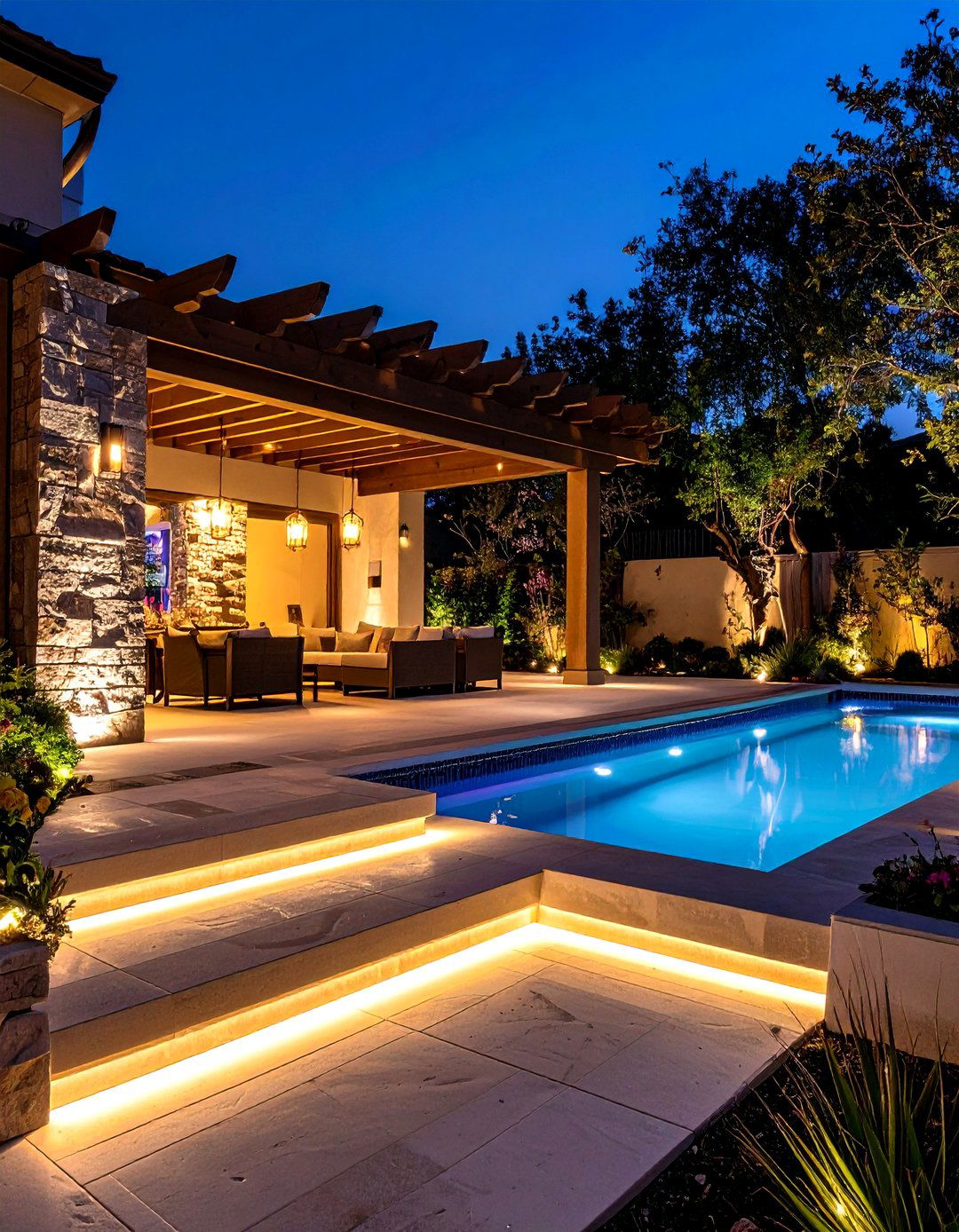
Strategically placed lighting elevates sunken patios into enchanting evening retreats. Recessed LED strips in step risers illuminate pathways without glare, while uplights at the base of retaining walls highlight texture and create depth. Pendant fixtures hung from pergolas or overhanging structures draw the eye upward, defining the vertical space. Low-voltage, weatherproof fixtures powered by an outdoor-rated transformer ensure safety and ease of installation. Consider color-changing LEDs for dynamic ambiance and to accent outdoor gatherings with festive flair.
13. Outdoor Fireplace Combination
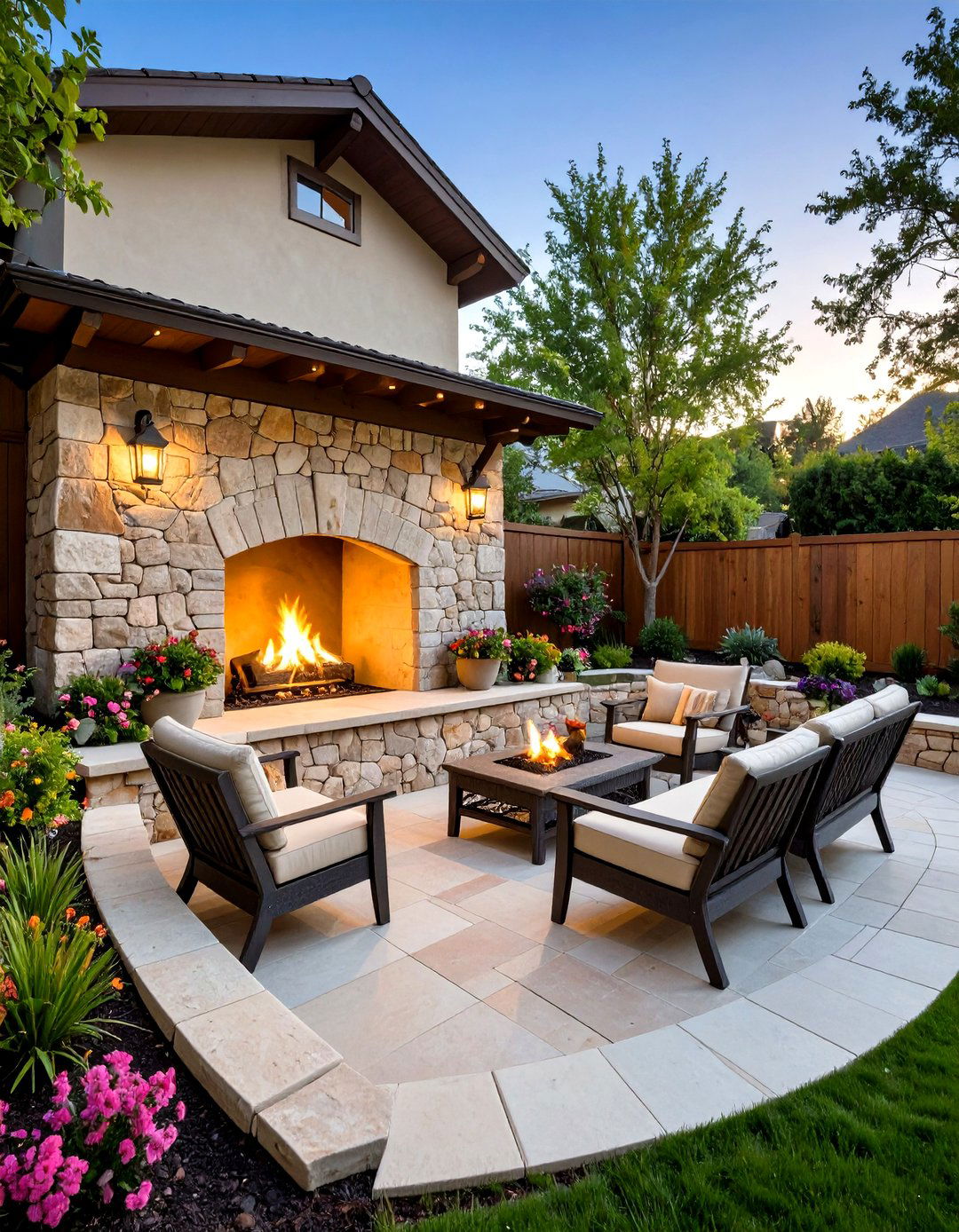
Combine a traditional wood-burning or gas fireplace with a sunken patio for year-round warmth and a commanding focal point. Construct the fireplace into one end of the retaining wall, matching materials to the patio floor for cohesion. Incorporate a raised hearth that doubles as extra seating, and install a stainless-steel liner for efficient drafting. A chimney cap prevents downdrafts and protects masonry from water damage. Surround the fireplace with durable, non-combustible accents like steel cladding or stone veneer to ensure longevity.
14. Geometric Hardscape Patterns

Elevate your sunken patio’s visual interest by arranging pavers or tiles in geometric layouts—such as herringbone, basketweave, or radial patterns radiating from a central focal point. Use contrasting grout colors to define patterns more sharply, or select multi-hued pavers for a mosaic effect. Precise installation on a level base is essential to maintain pattern integrity. Geometric hardscapes suit both traditional and contemporary settings, offering a tailored look that reflects personal style.
15. Colorful Tile Accents
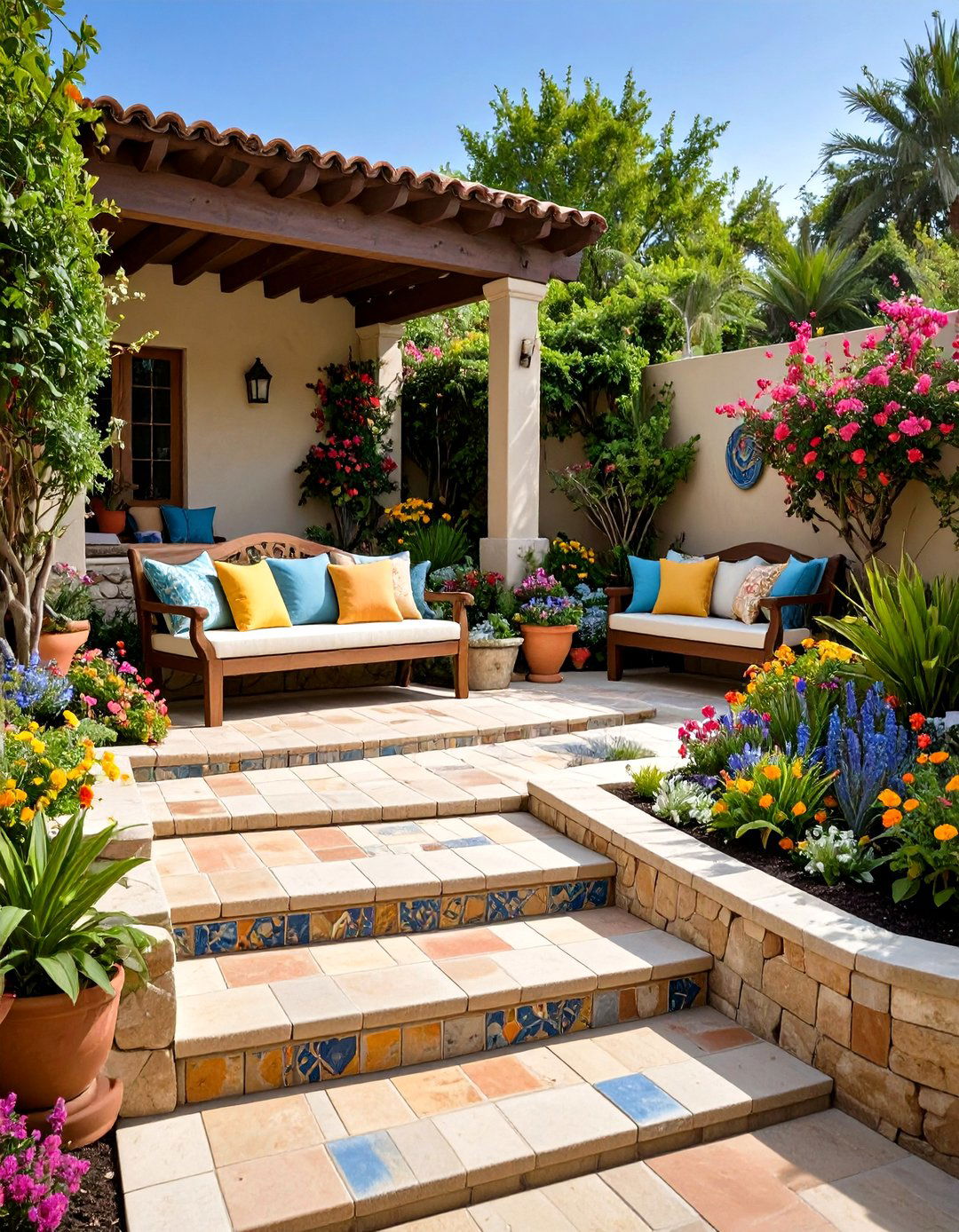
Incorporate vibrant ceramic or porcelain tiles along steps, bench risers, or feature walls to infuse your sunken patio with personality. Patterned tiles in Mediterranean blues and terracottas create a festive atmosphere, while monochrome palettes lend a modern edge. Ensure tiles are rated for outdoor use, with frost-resistant properties if you experience freeze–thaw cycles. Epoxy grout provides color-stable joints that resist staining. Pair tile accents with neutral stone or concrete elements to balance bold hues.
16. Built-In Planter Borders

Frame your sunken patio with planter boxes integrated into the retaining walls to blend hardscape and landscape seamlessly. Use durable materials like corten steel, concrete, or rot-resistant wood for planter construction. Fill planters with a mix of tall grasses, flowering perennials, and evergreen shrubs to provide year-round interest and privacy. Incorporate irrigation tubing hidden within the wall cavity to maintain healthy plantings. Planter borders double as seating ledges when capped with wide coping stones.
17. Glass Railing Boundaries
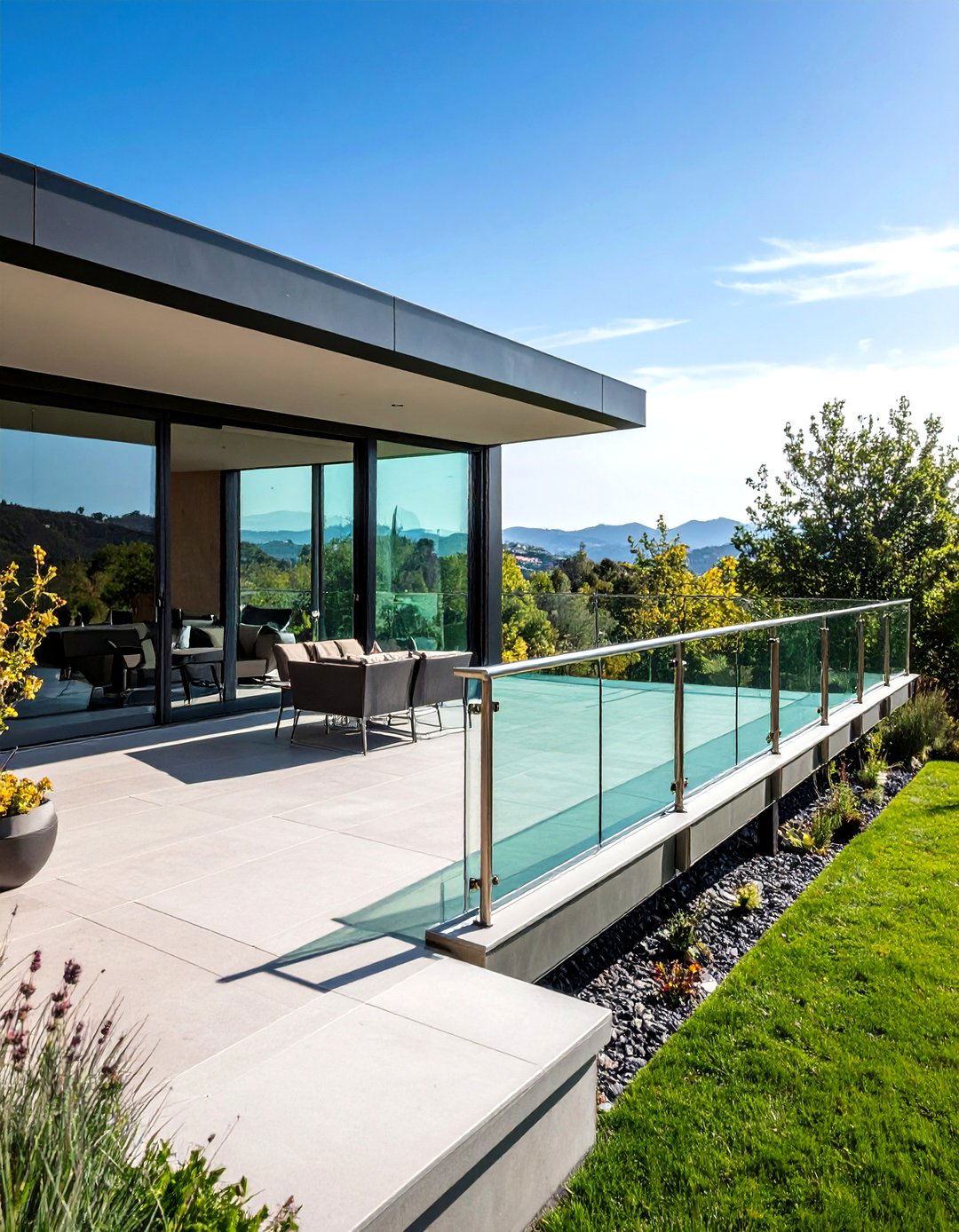
Surround the upper edge of your sunken patio with frameless tempered glass panels to maintain safety without obstructing views of the landscape. Glass railings offer a sleek, modern alternative to traditional balustrades. Use minimal stainless-steel or aluminum hardware for mounting, ensuring that the glass sits on hidden base shoes to emphasize transparency. Regular cleaning prevents buildup of water spots and maintains clarity. Glass boundaries create the illusion of a floating space while protecting against accidental falls.
18. Textured Gravel Flooring
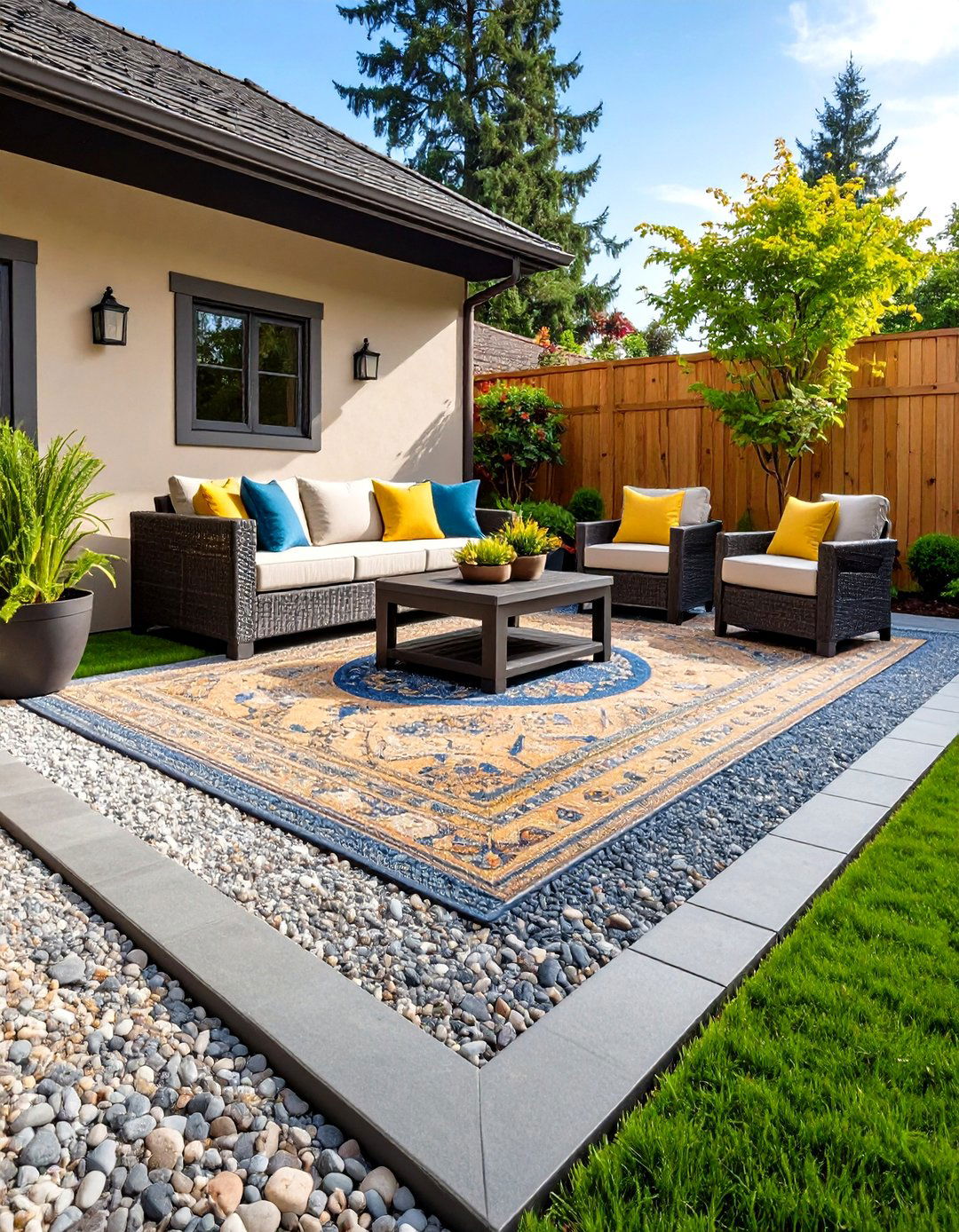
For a budget-friendly and permeable alternative to pavers, consider a compacted decomposed granite or crushed pea gravel floor in your sunken patio. The irregular surface provides natural drainage and a casual aesthetic. Edge the gravel area with steel or stone borders to contain material and define shape. A geo-fabric underlayment minimizes weed growth and mixing with underlying soil. Top the gravel with an outdoor area rug to soften underfoot and designate seating zones.
19. Retractable Shade Solutions
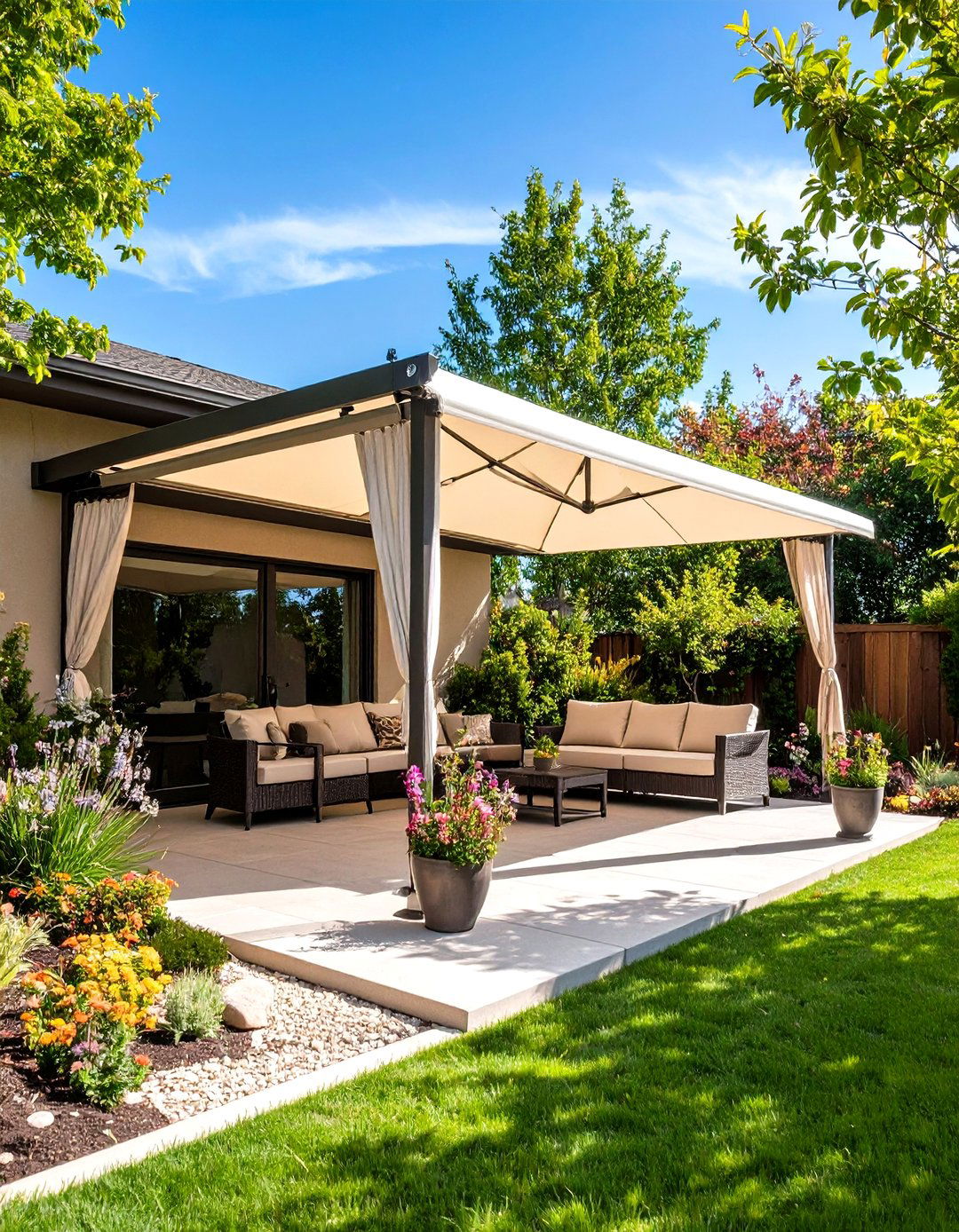
Install a motorized retractable awning or shade sail above your sunken patio to offer sun protection and rain coverage on demand. Fabric awnings mounted to the house or pergola frame can extend over the patio area with the push of a button. Shade sails attached to freestanding posts provide a modern, sculptural element while shading irregularly shaped patios. Use UV-resistant fabrics to ensure long-term color retention, and equip the system with wind sensors that retract the fabric during high winds to prevent damage.
20. Eco-Friendly Materials
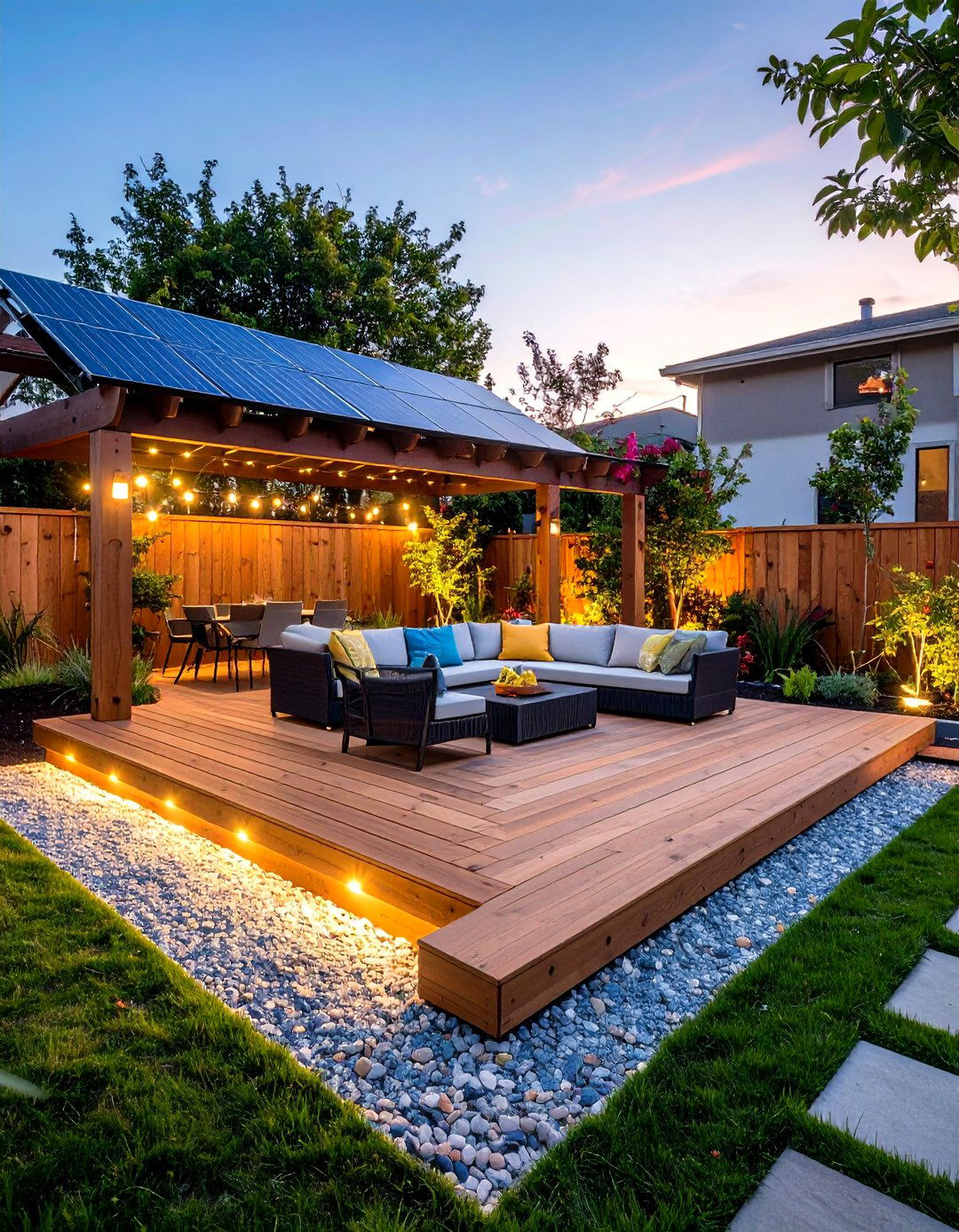
Opt for sustainable materials—such as recycled plastic lumber, reclaimed wood, or permeable pavers made from recycled concrete—to minimize environmental impact in your sunken patio design. Porous pavers allow stormwater infiltration, reducing runoff and replenishing groundwater. Choose locally sourced stone and FSC-certified wood to lower embodied energy in transportation. Incorporate solar-powered LED fixtures and energy-efficient gas fire features to further reduce carbon footprint, creating an eco-conscious outdoor oasis.
Conclusion:
Sunken patios offer boundless opportunities to craft intimate, visually striking outdoor retreats. By combining thoughtful hardscape patterns, strategic lighting, and diverse materials—from natural stone to eco-friendly composites—you can tailor a sunken patio to suit any style. Integrating functional elements such as fire pits, water features, built-in seating, and shade structures enhances comfort and usability across seasons. Whether you favor minimalist concrete lines or lush, garden-like surroundings, these 20 design ideas provide a comprehensive foundation to inspire the sunken patio of your dreams.


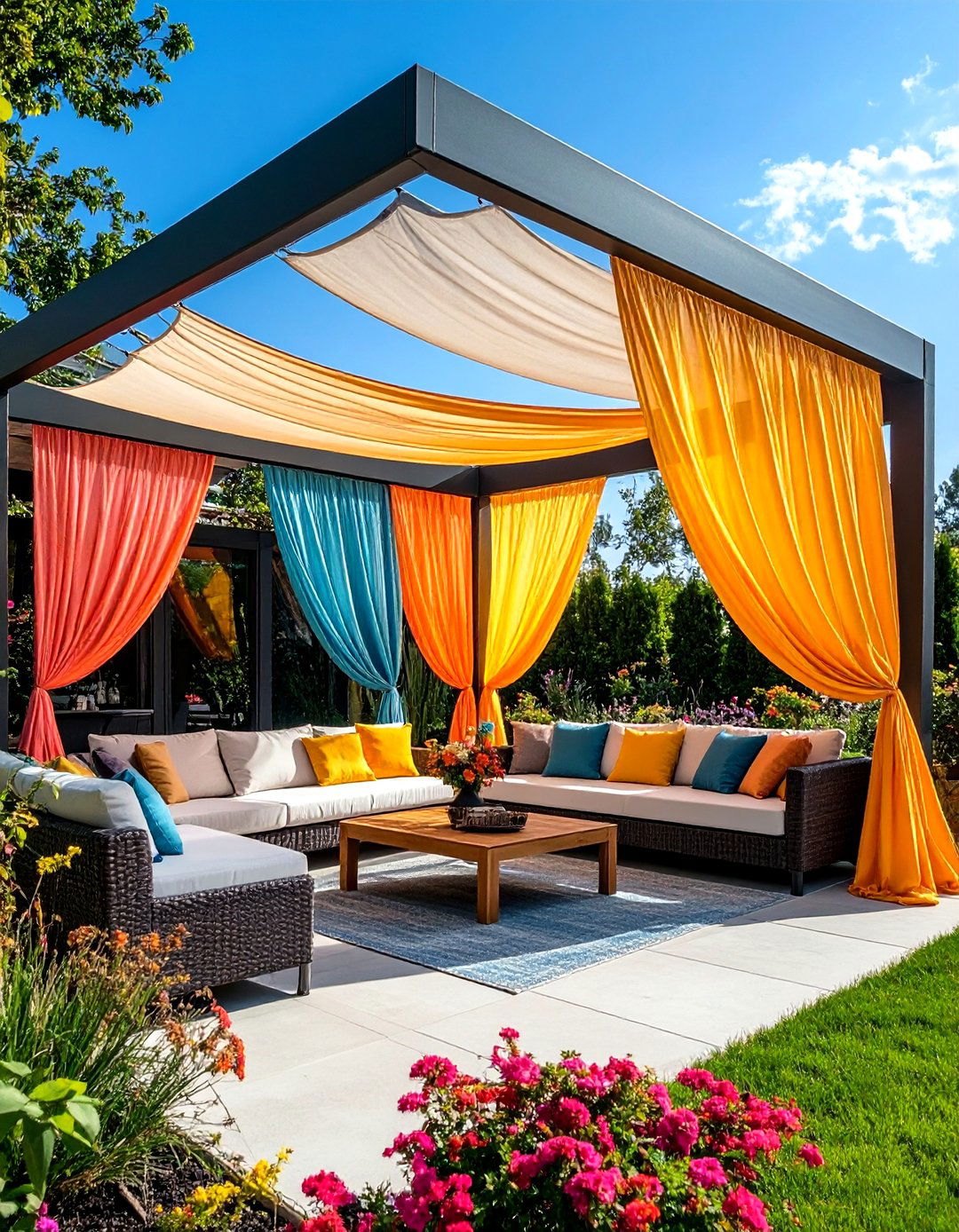

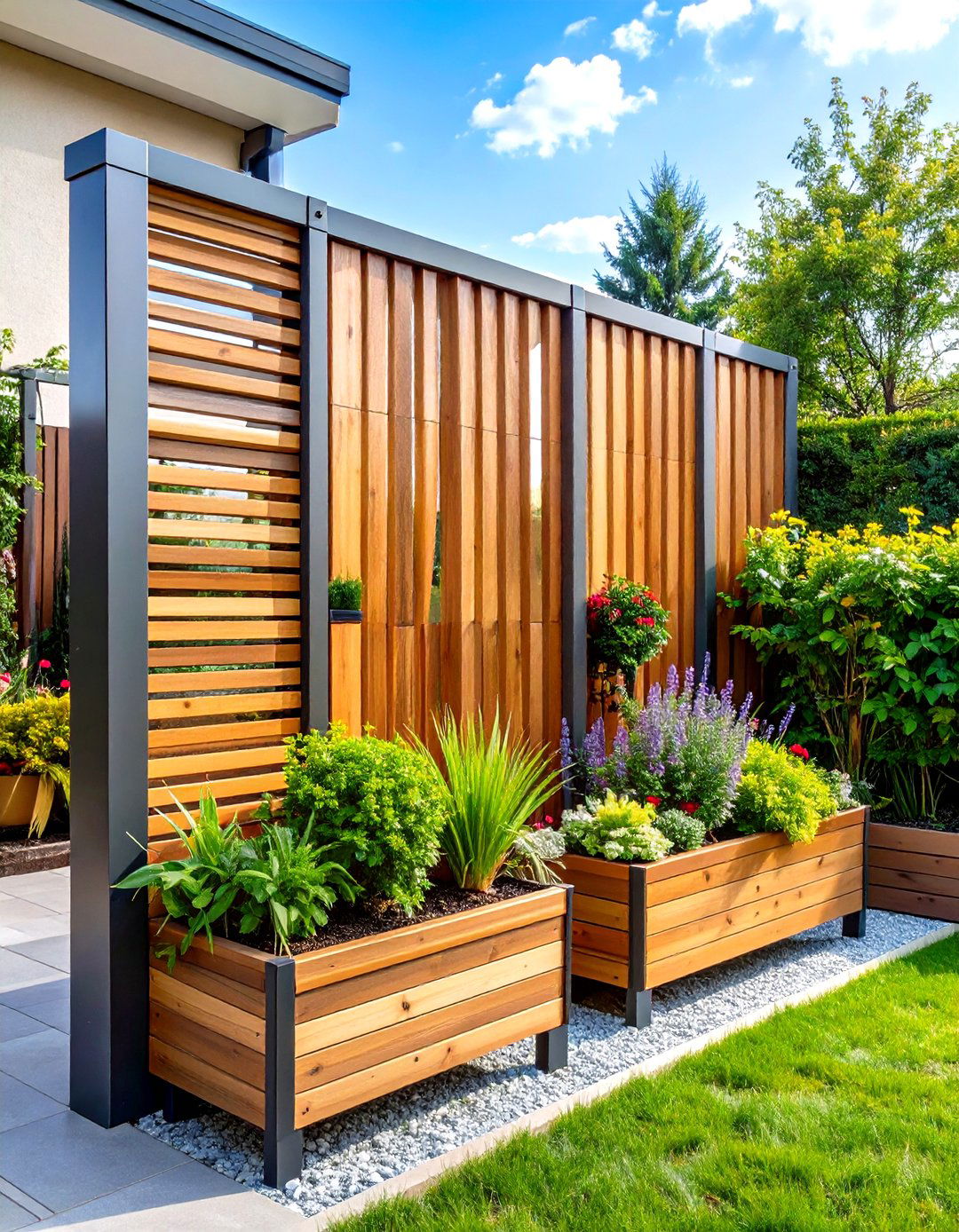
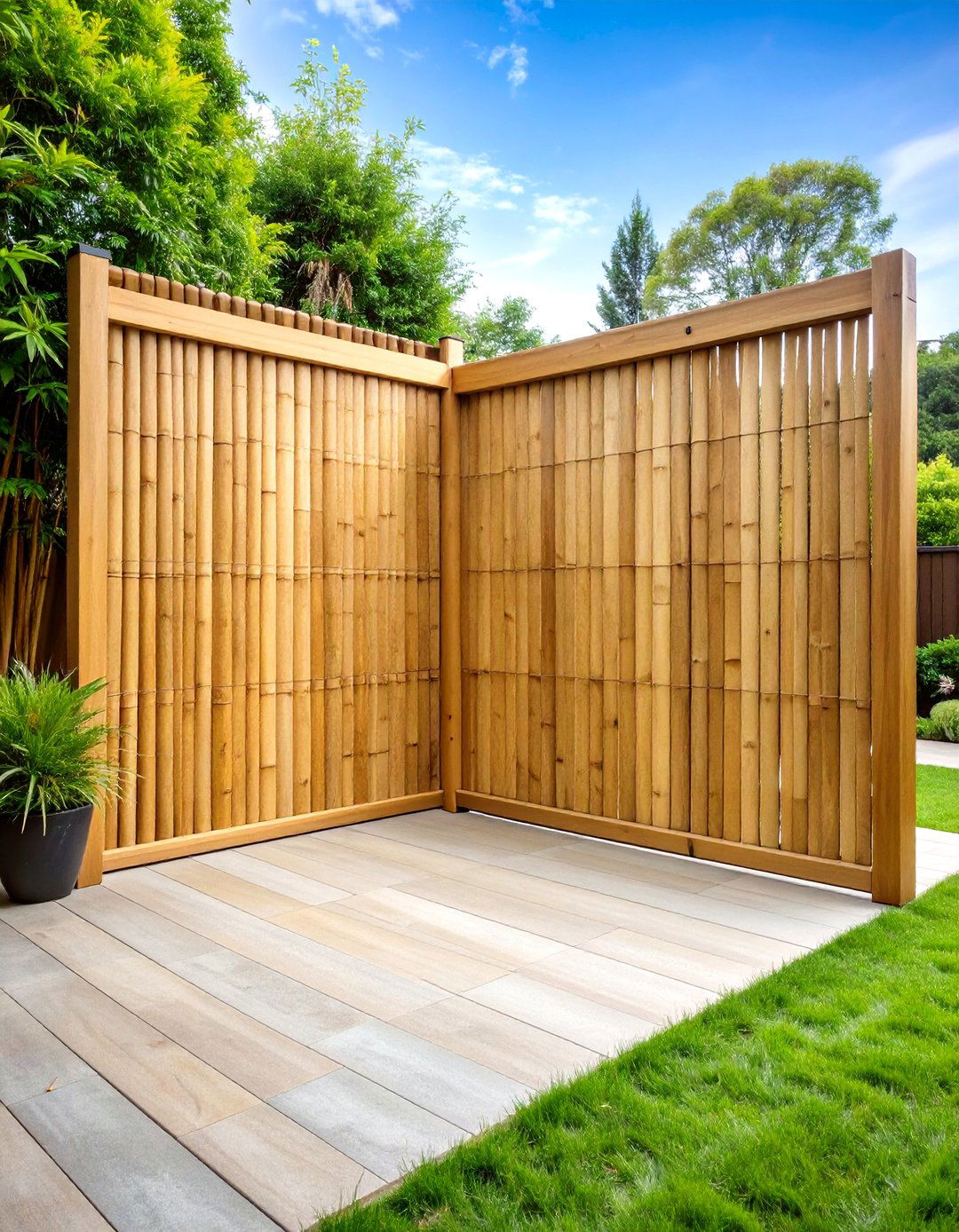
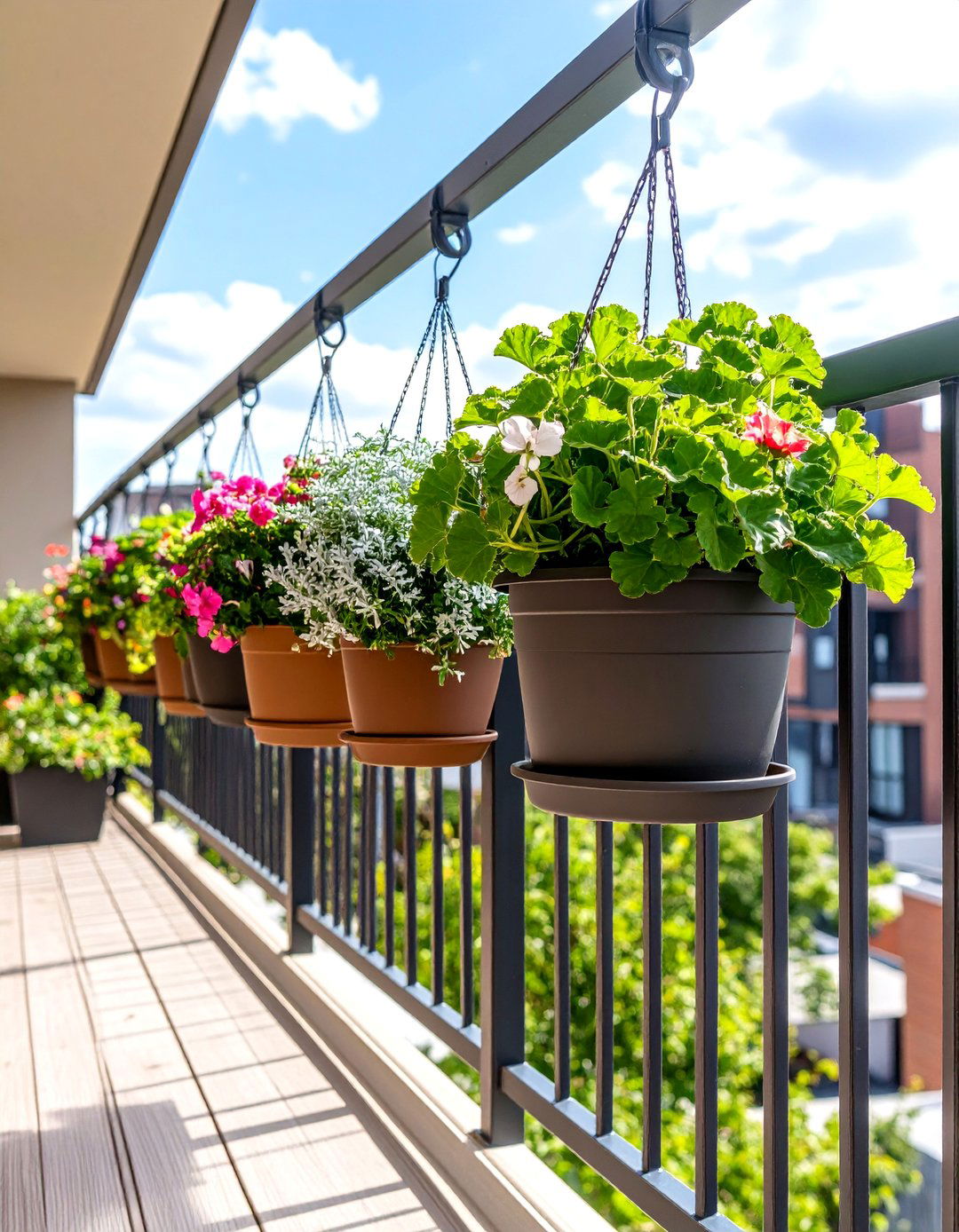
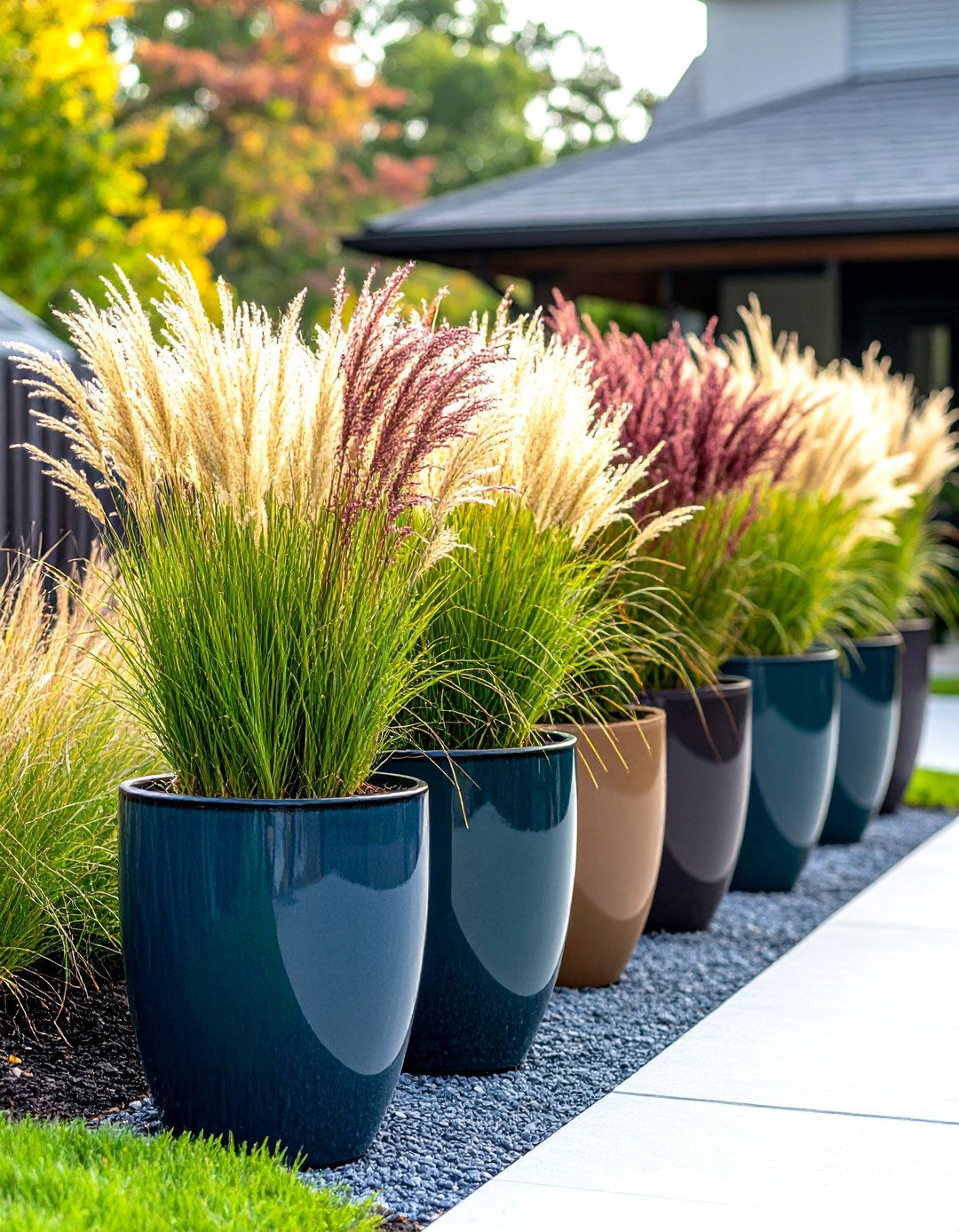
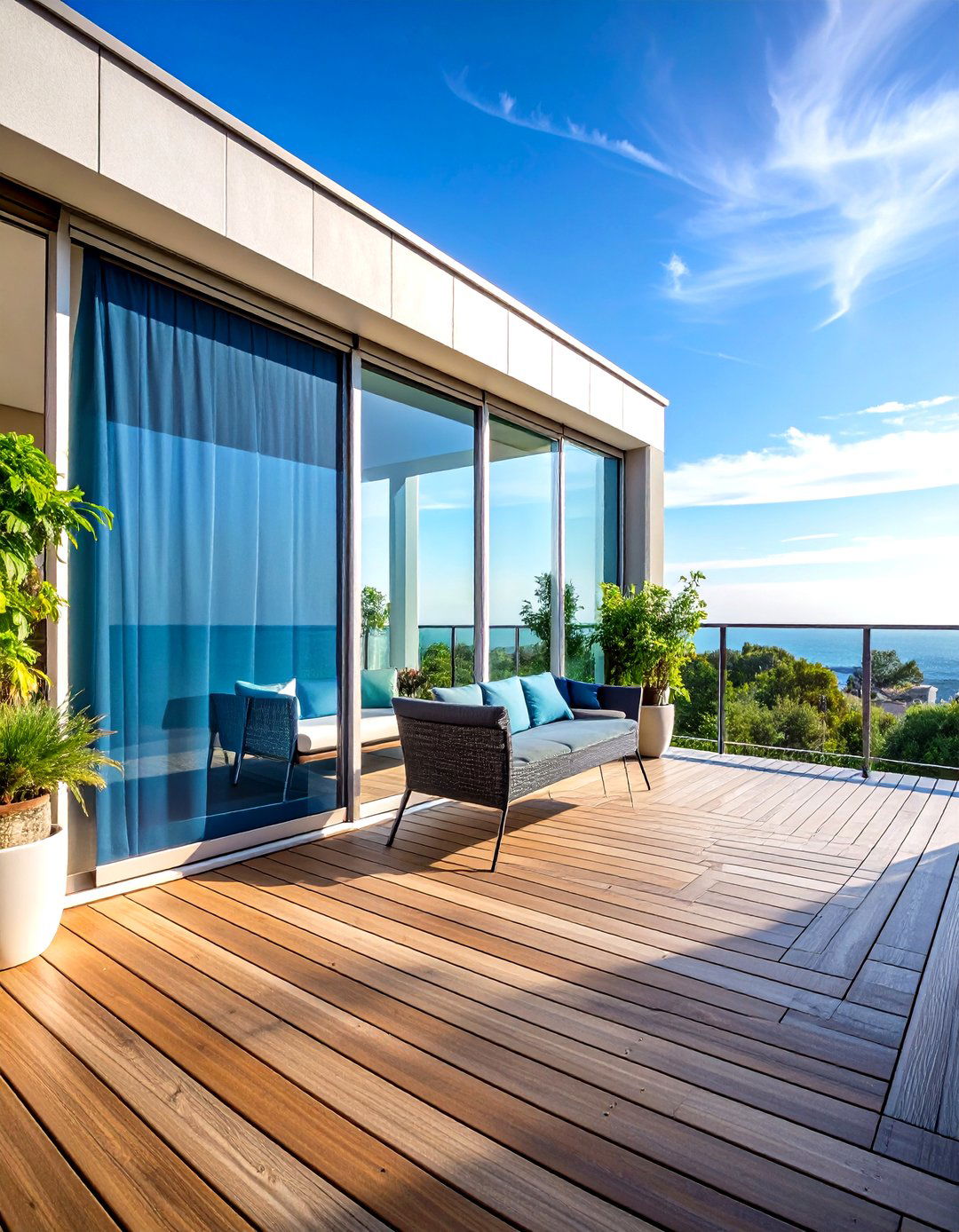
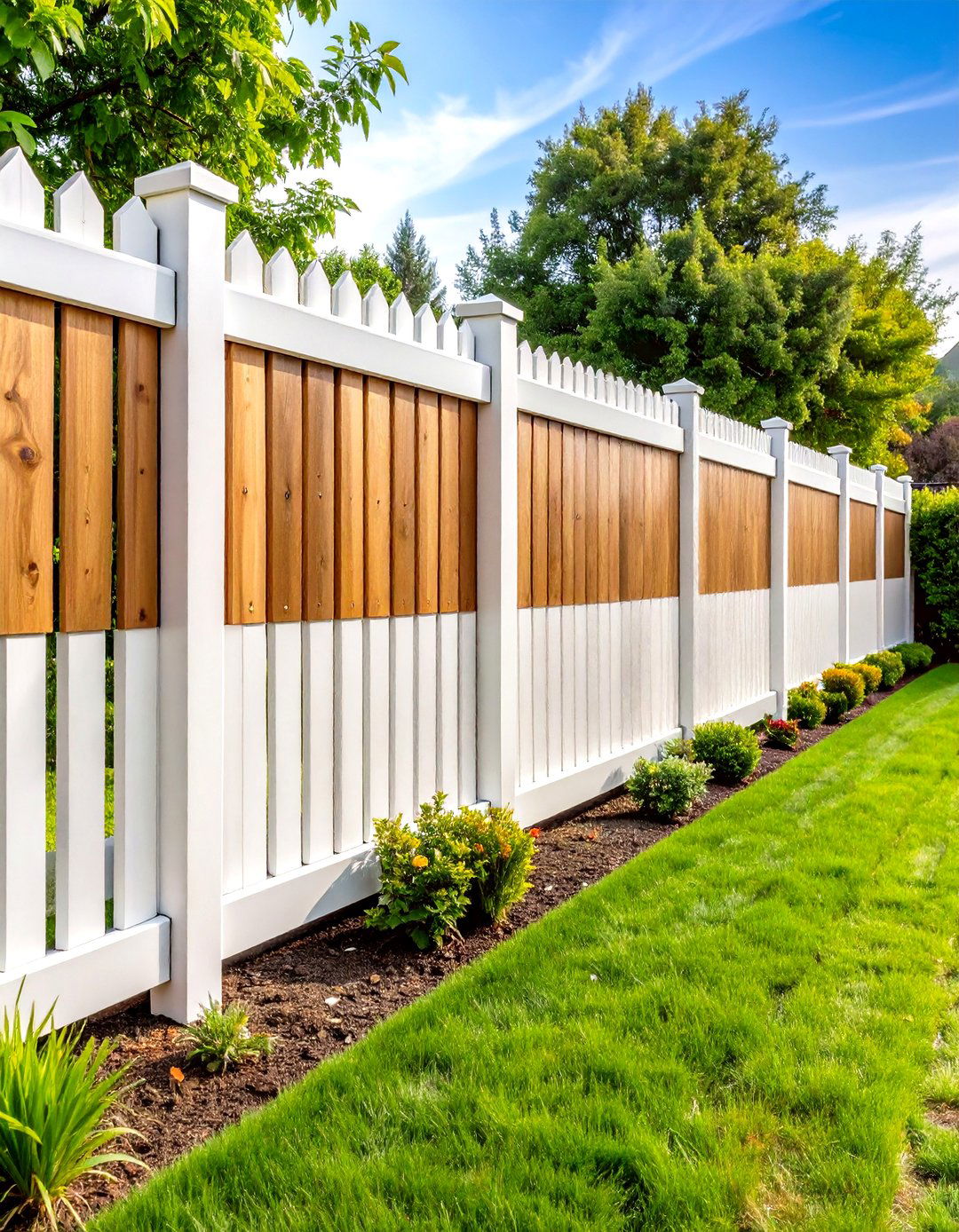
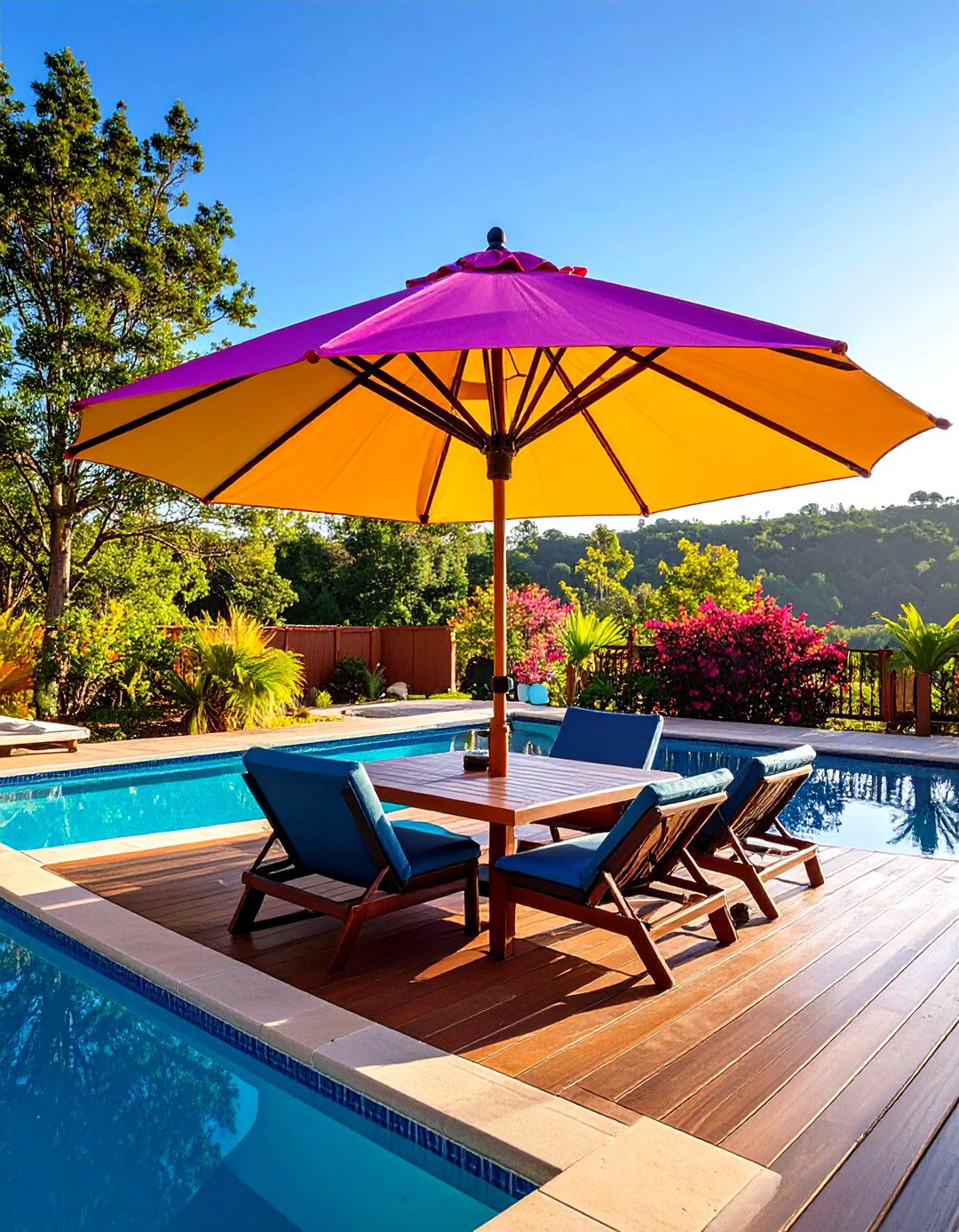
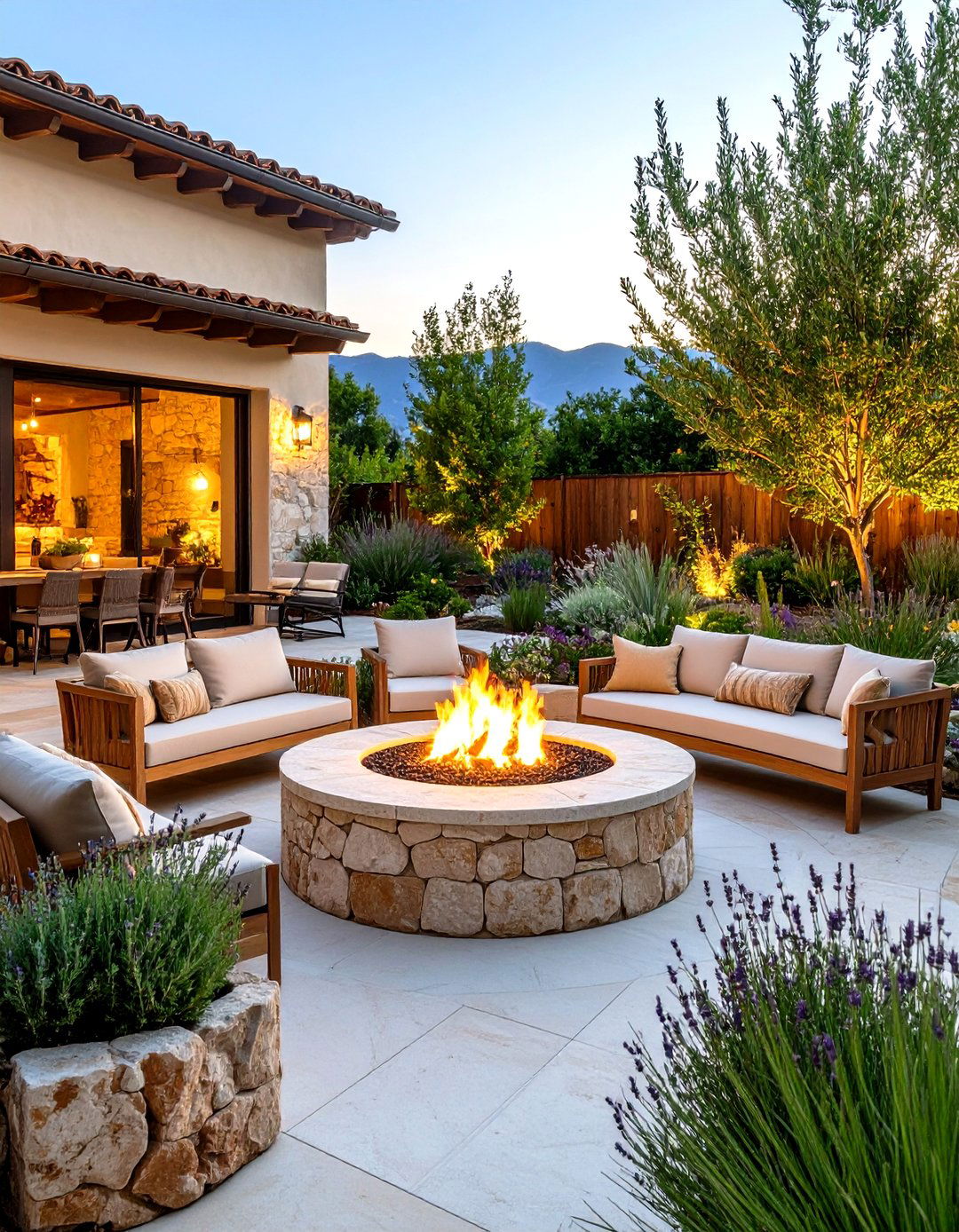
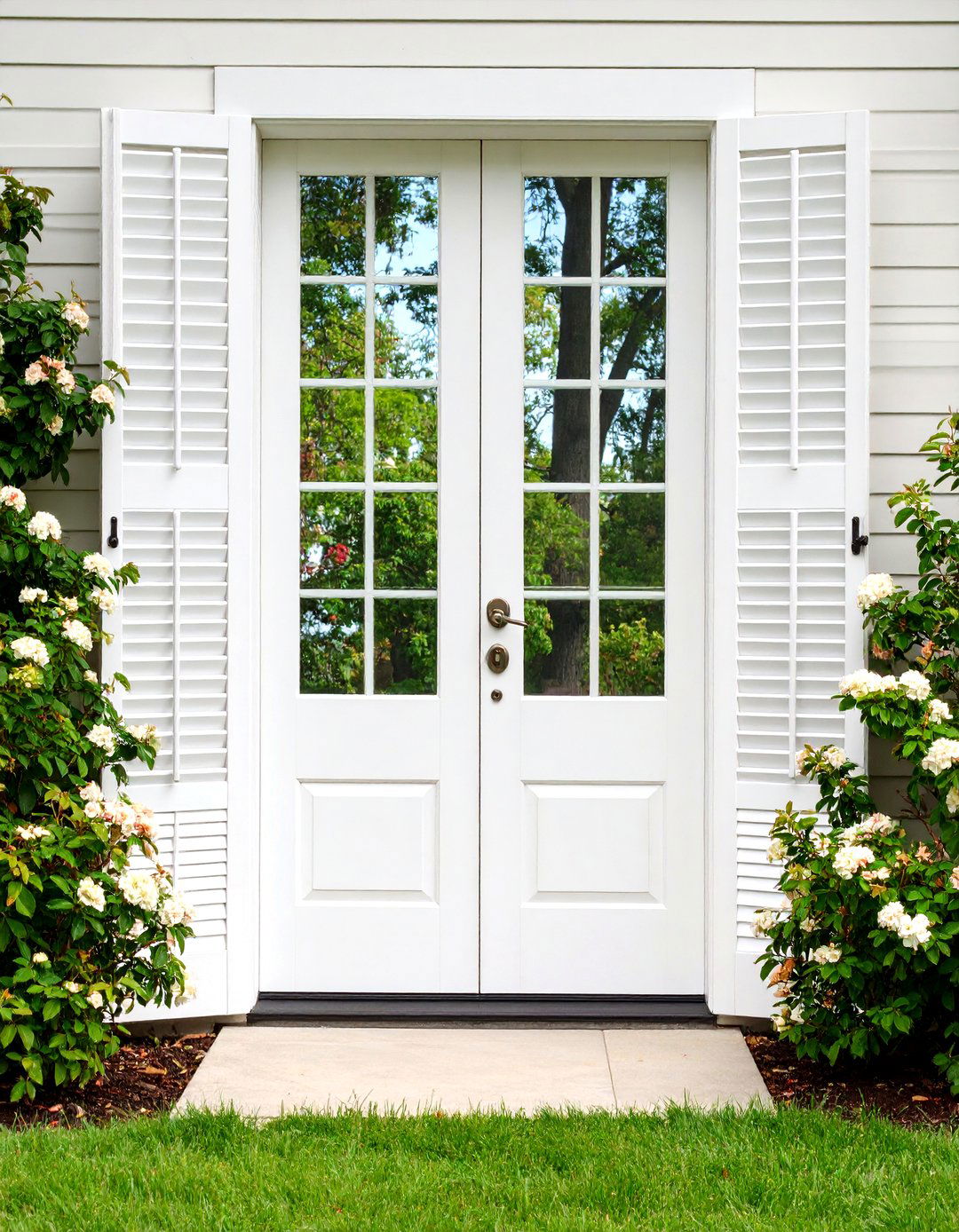
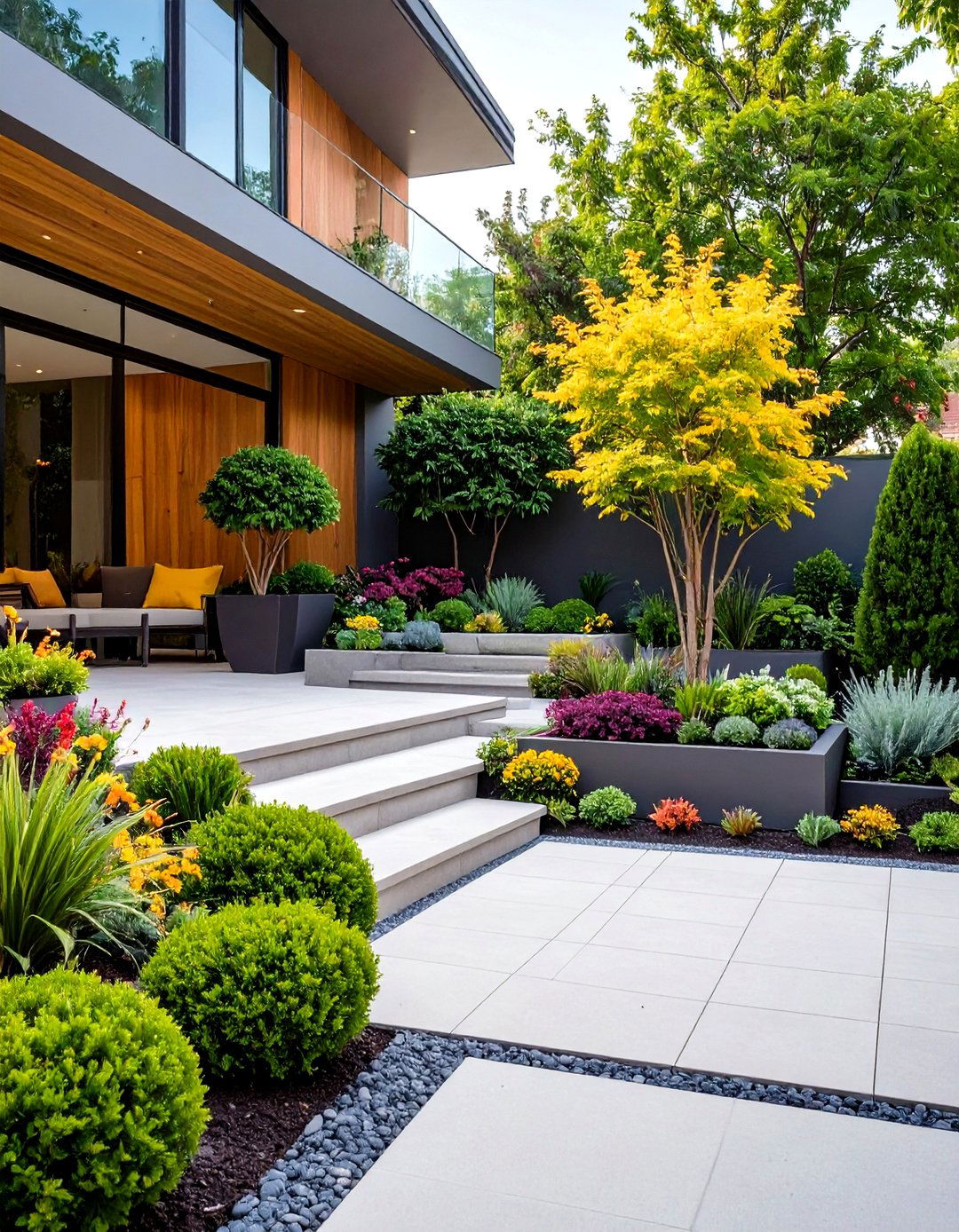
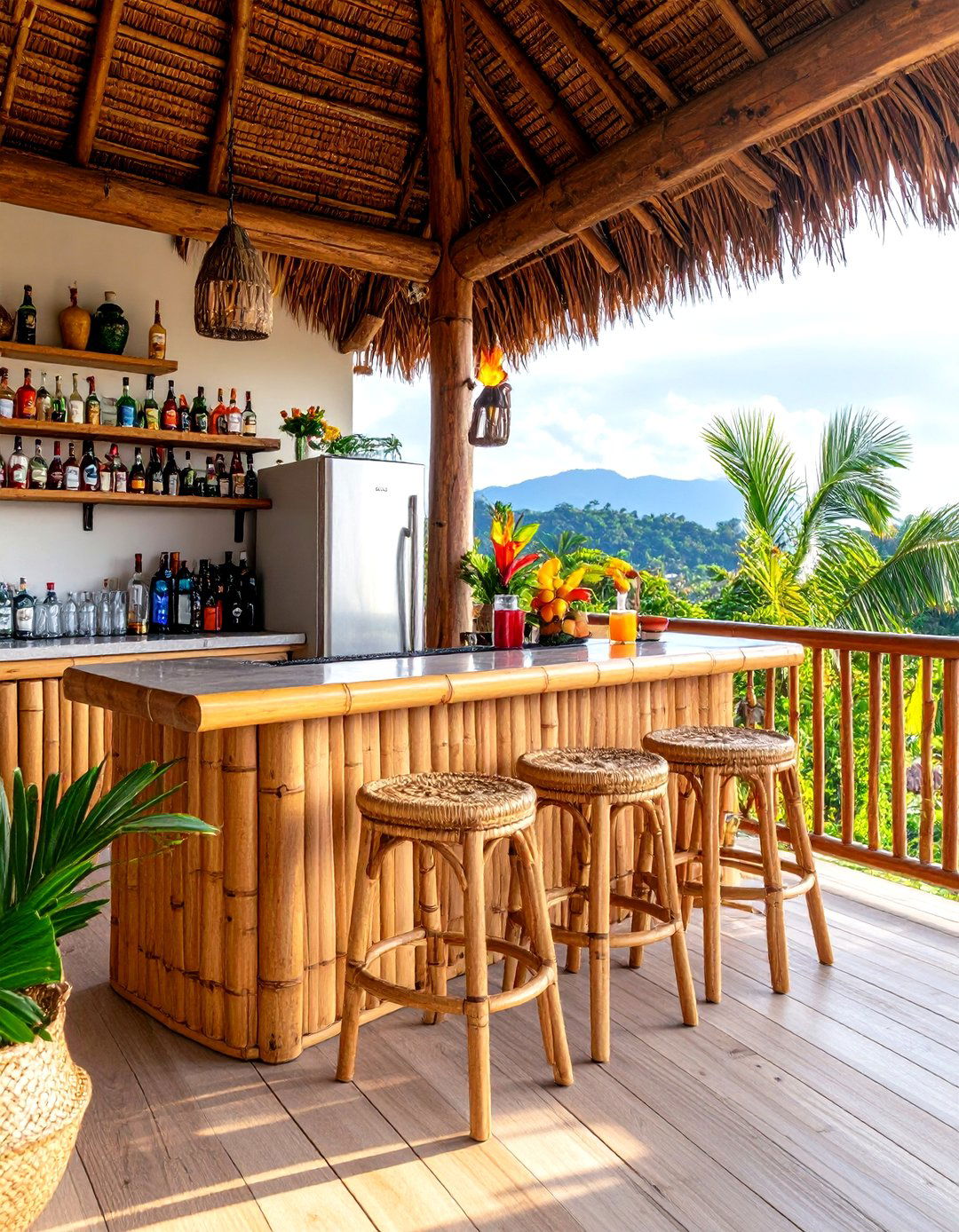
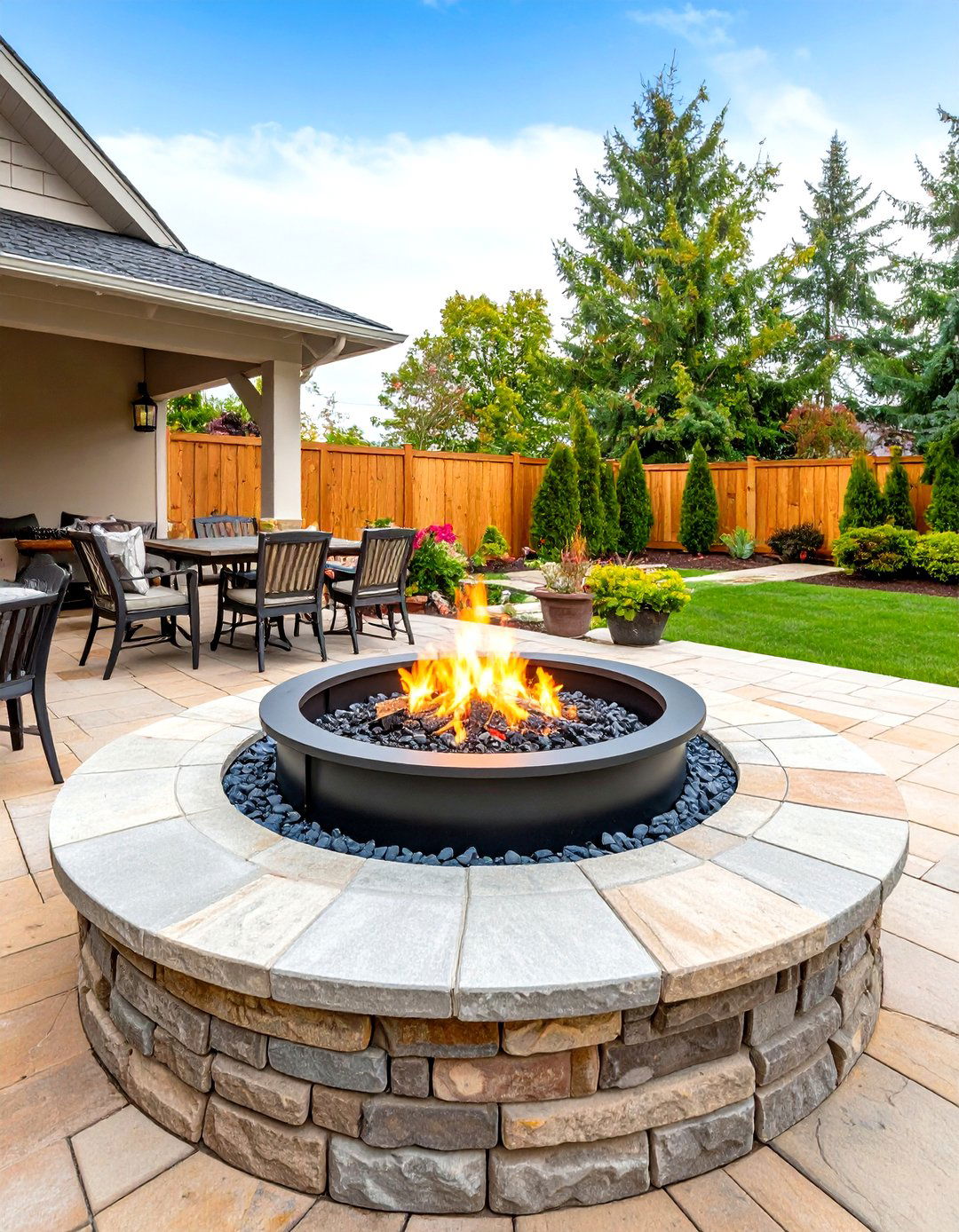
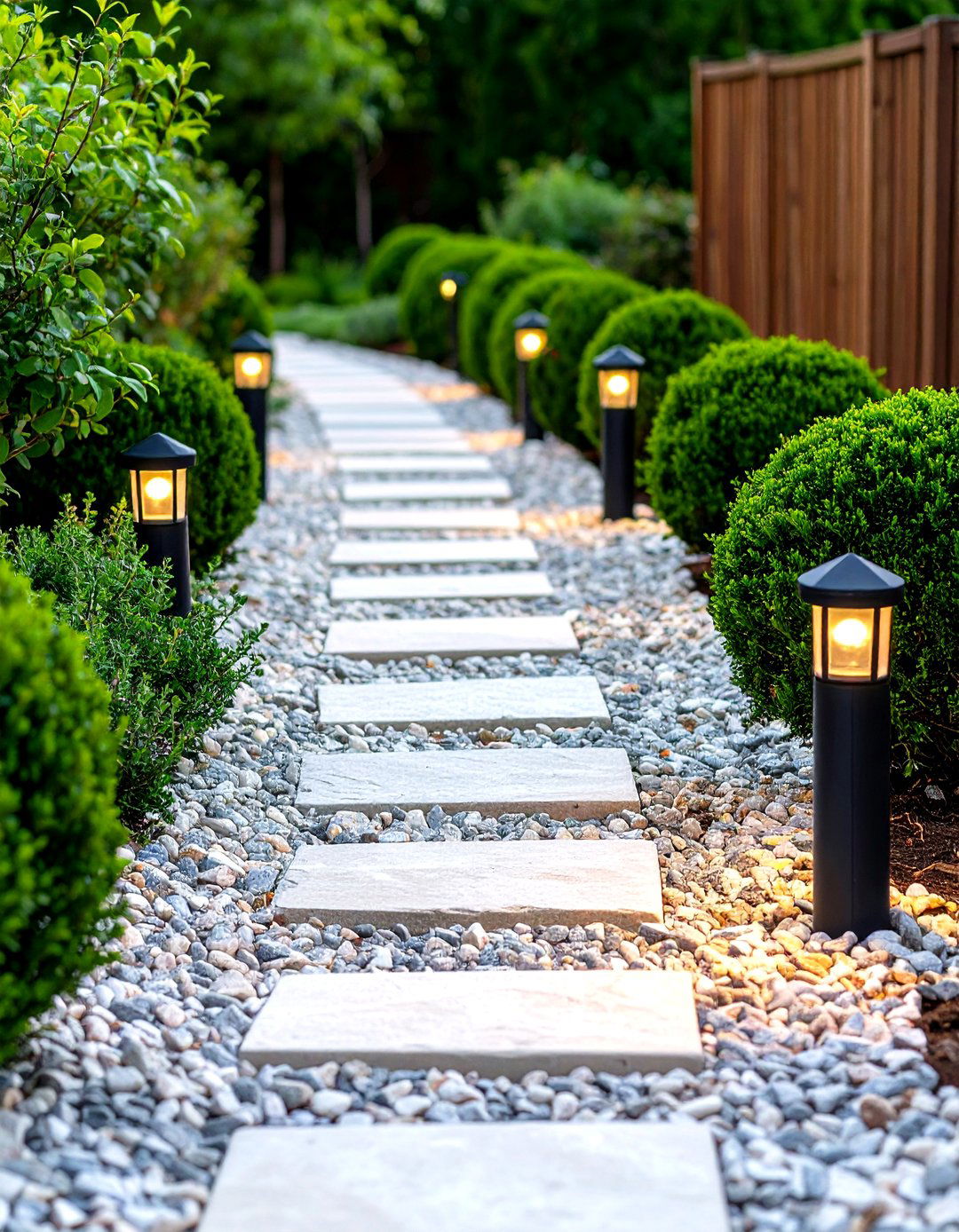
Leave a Reply